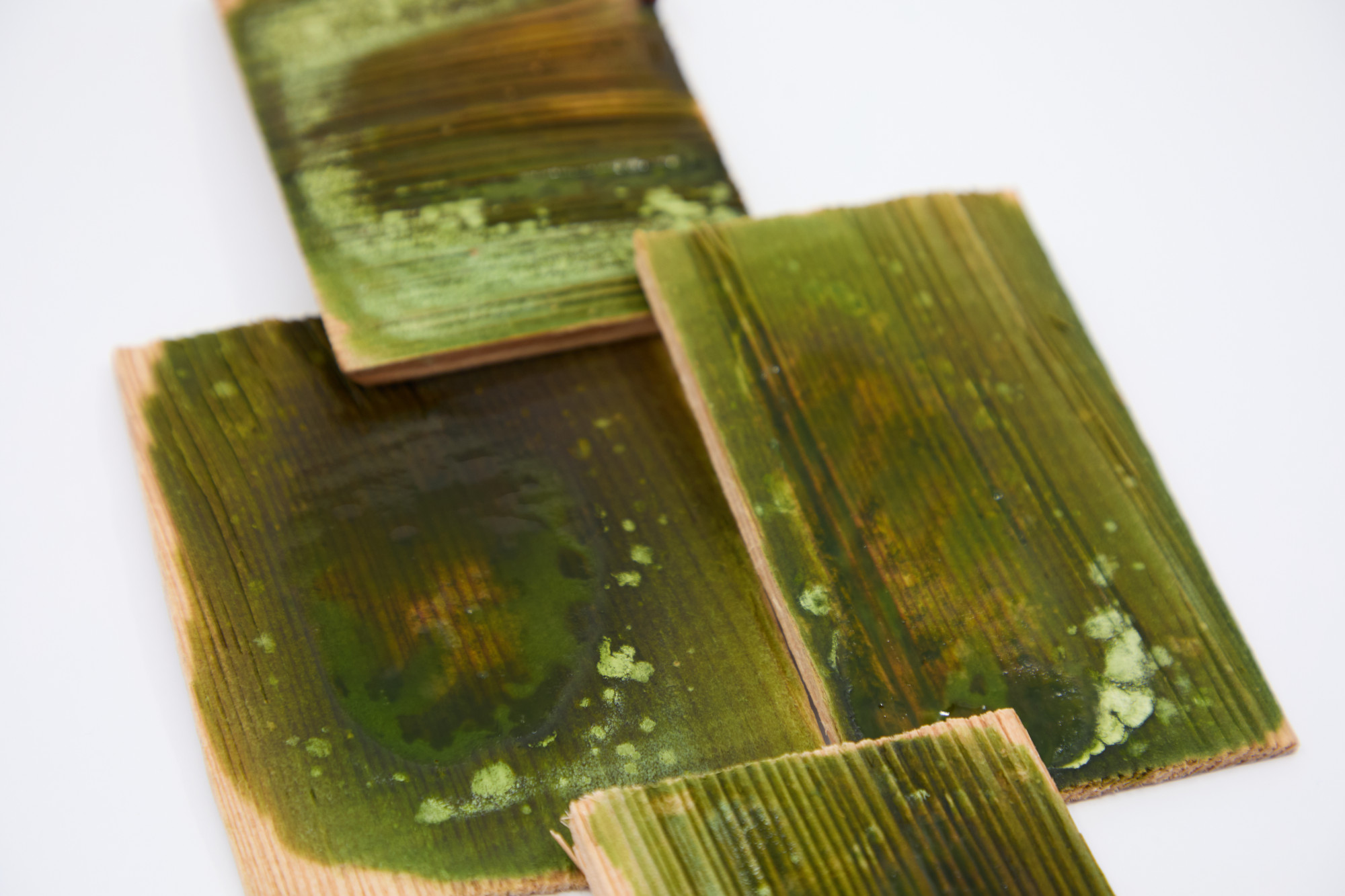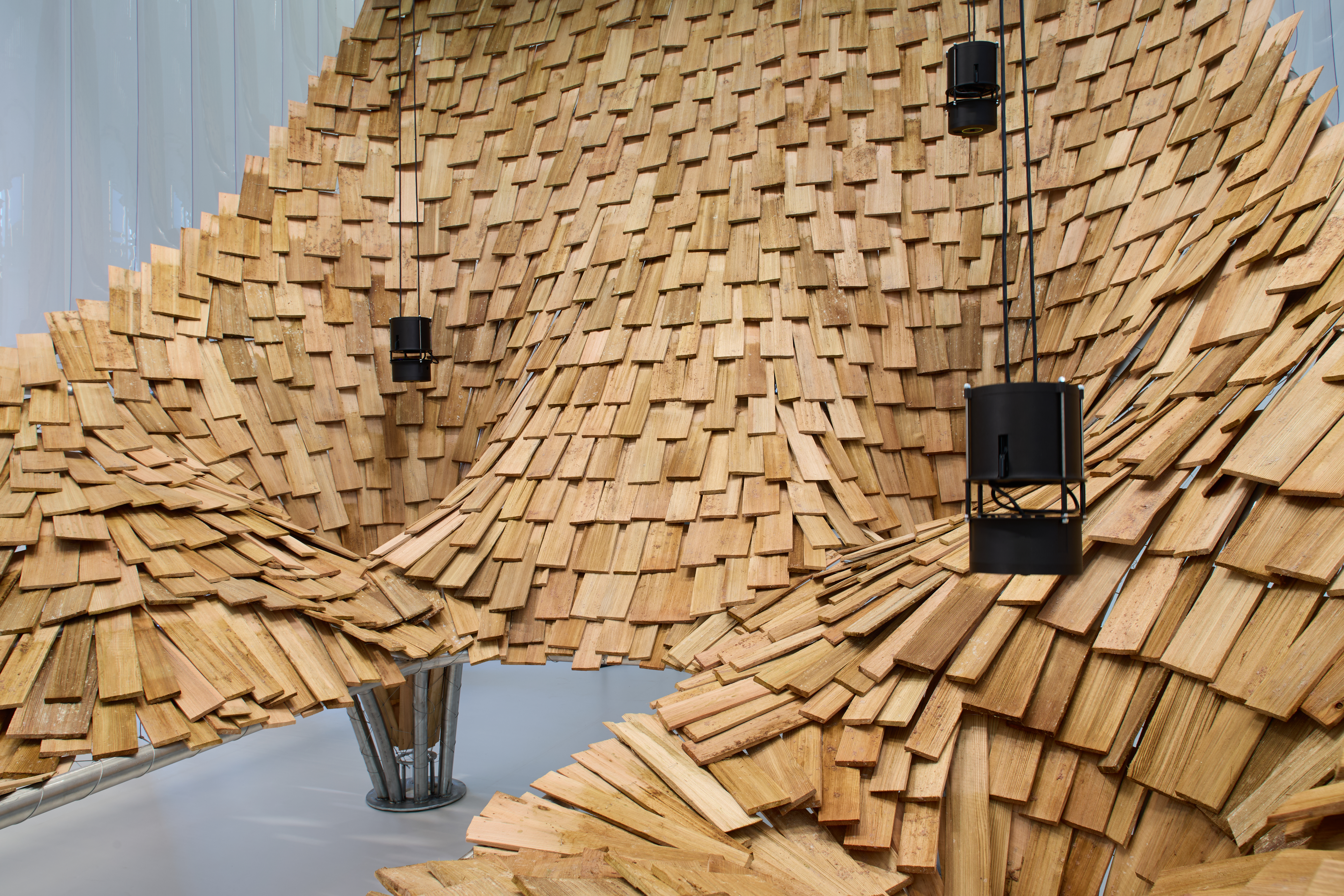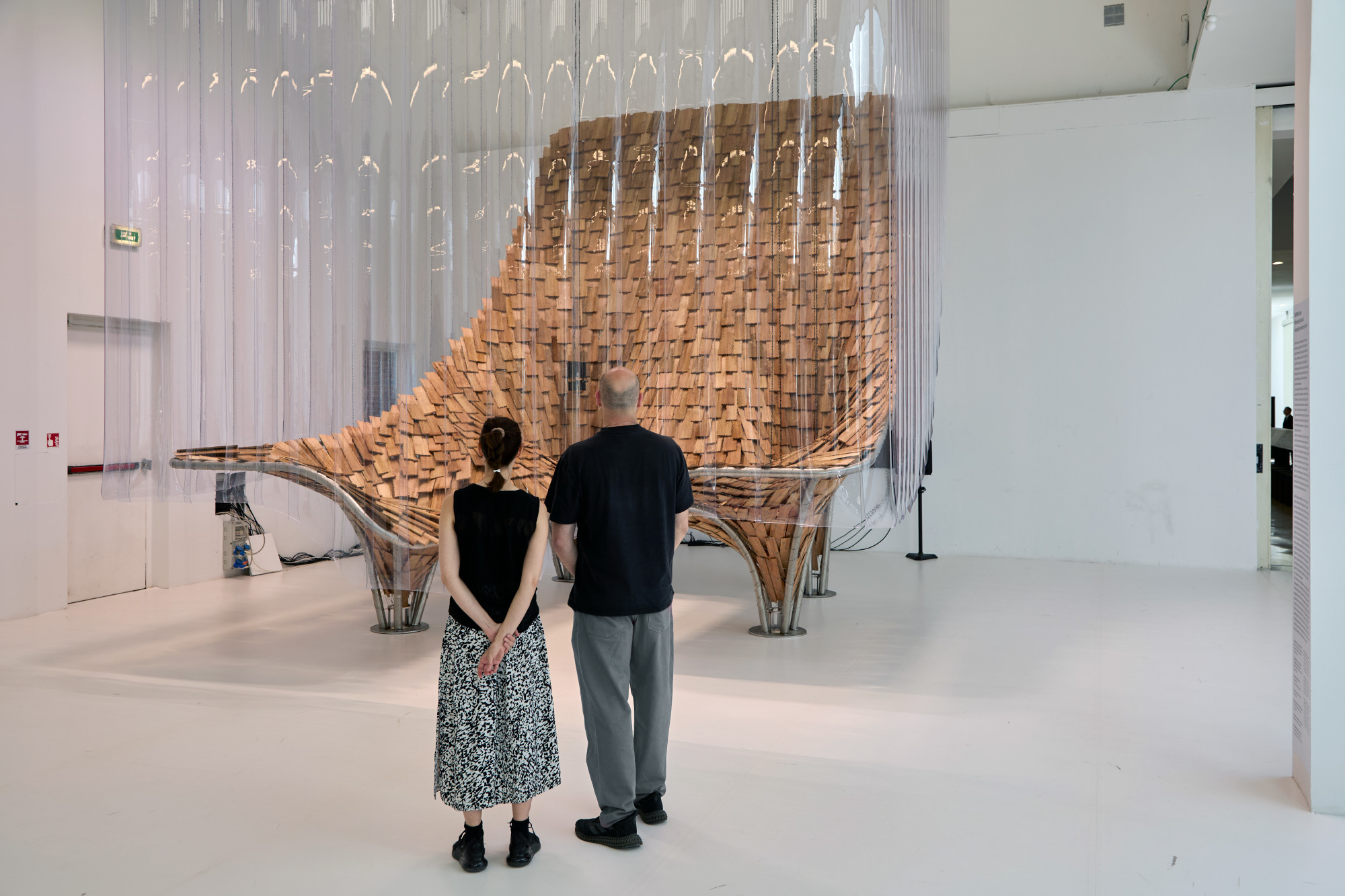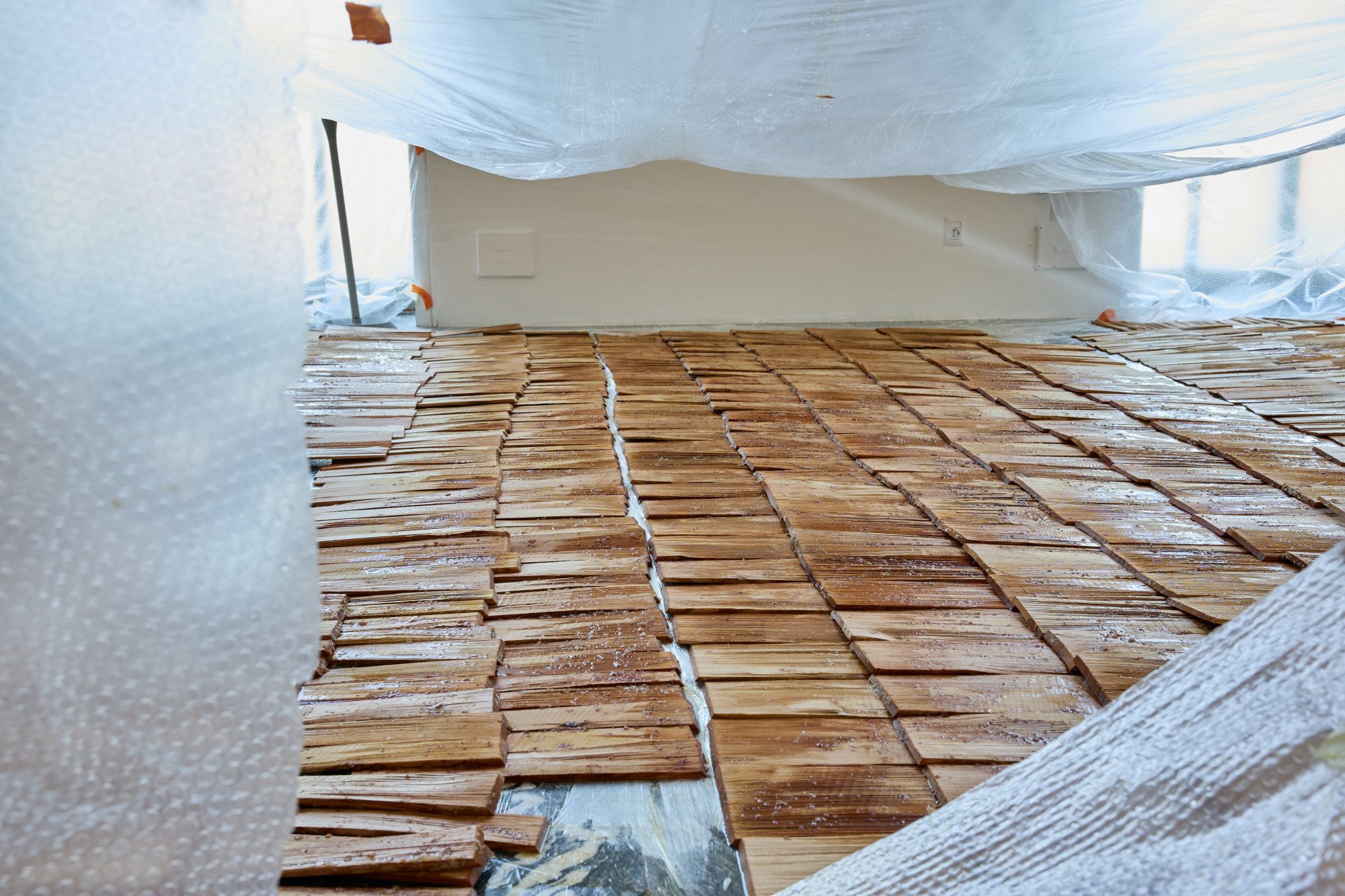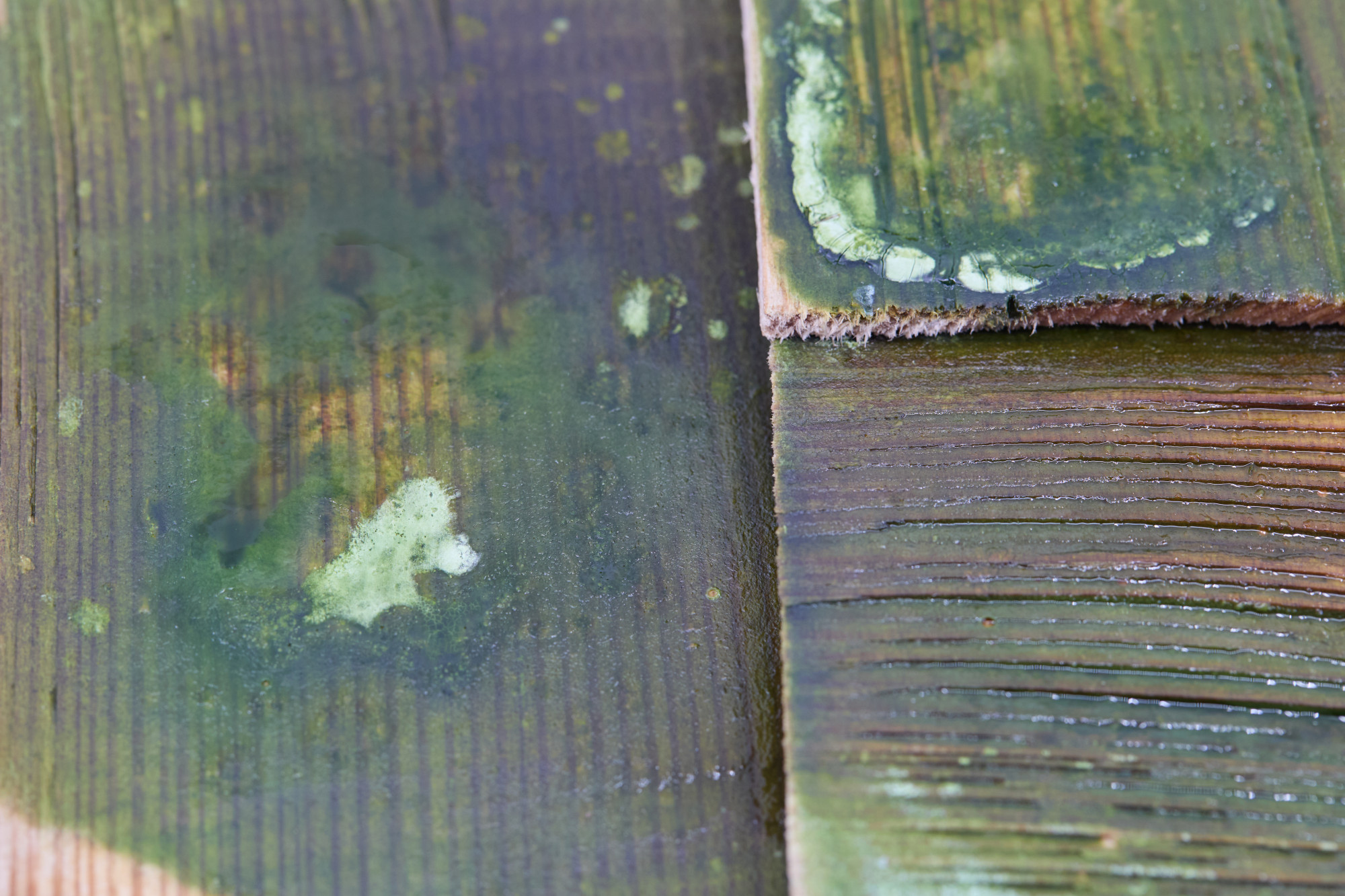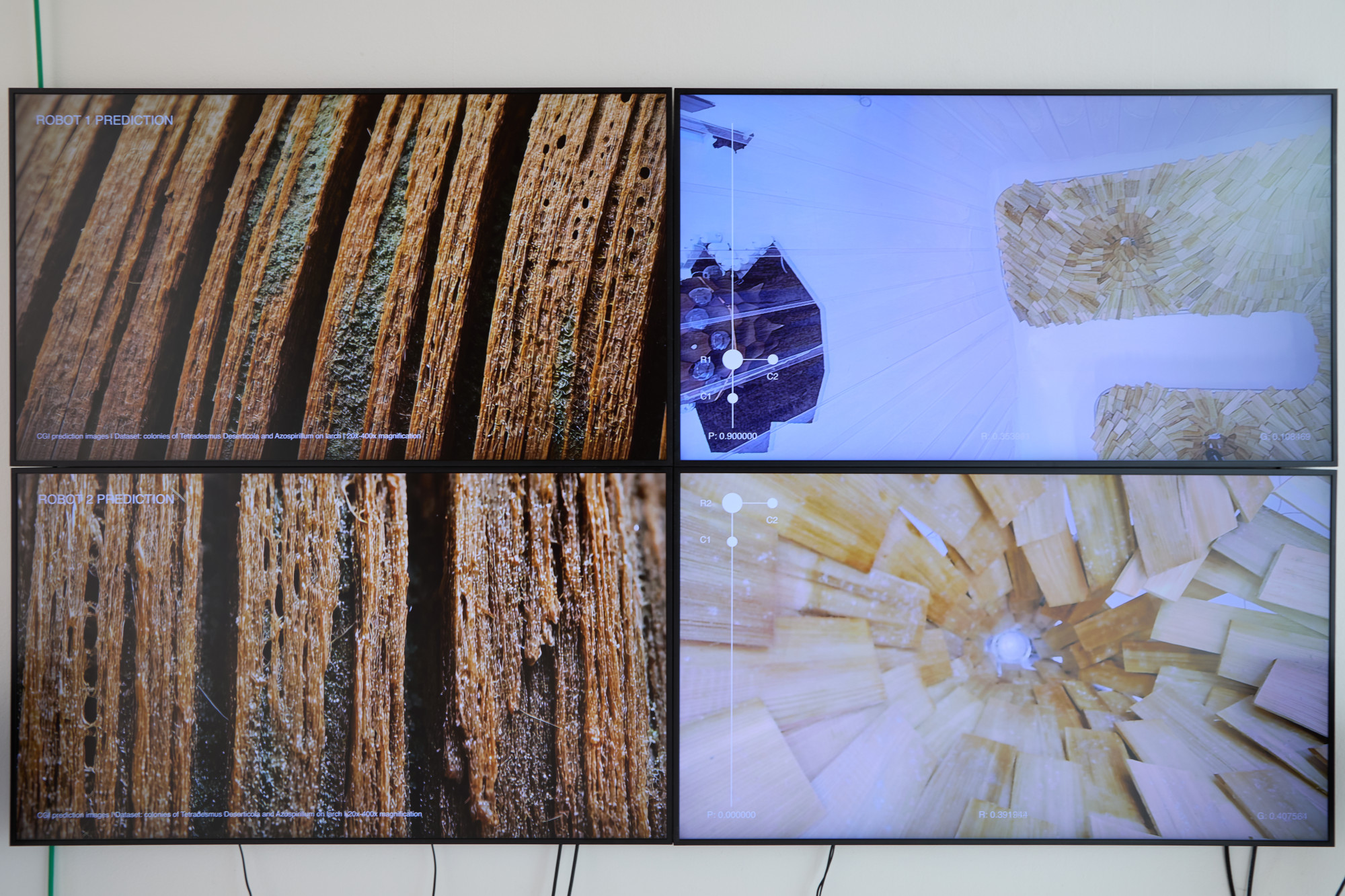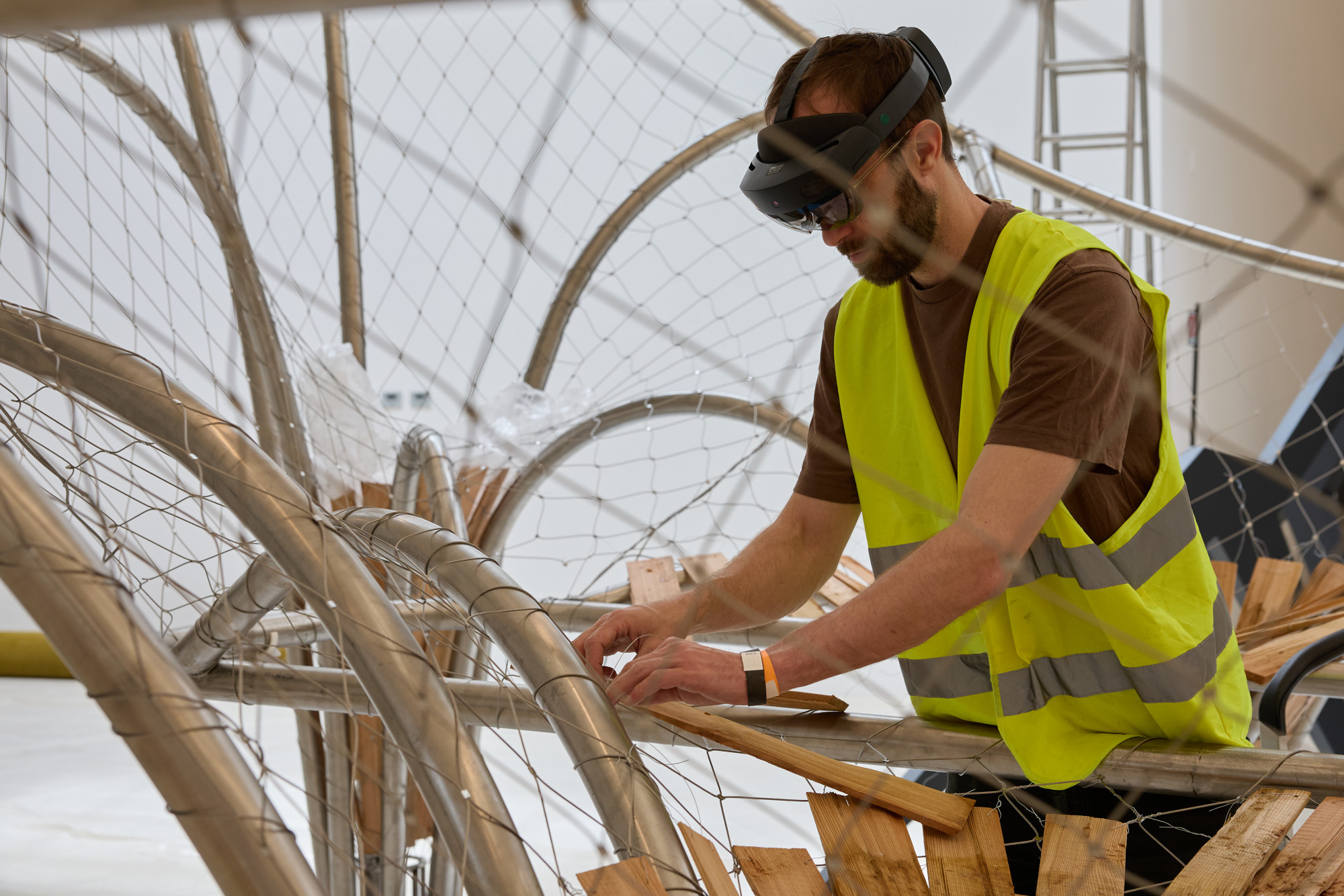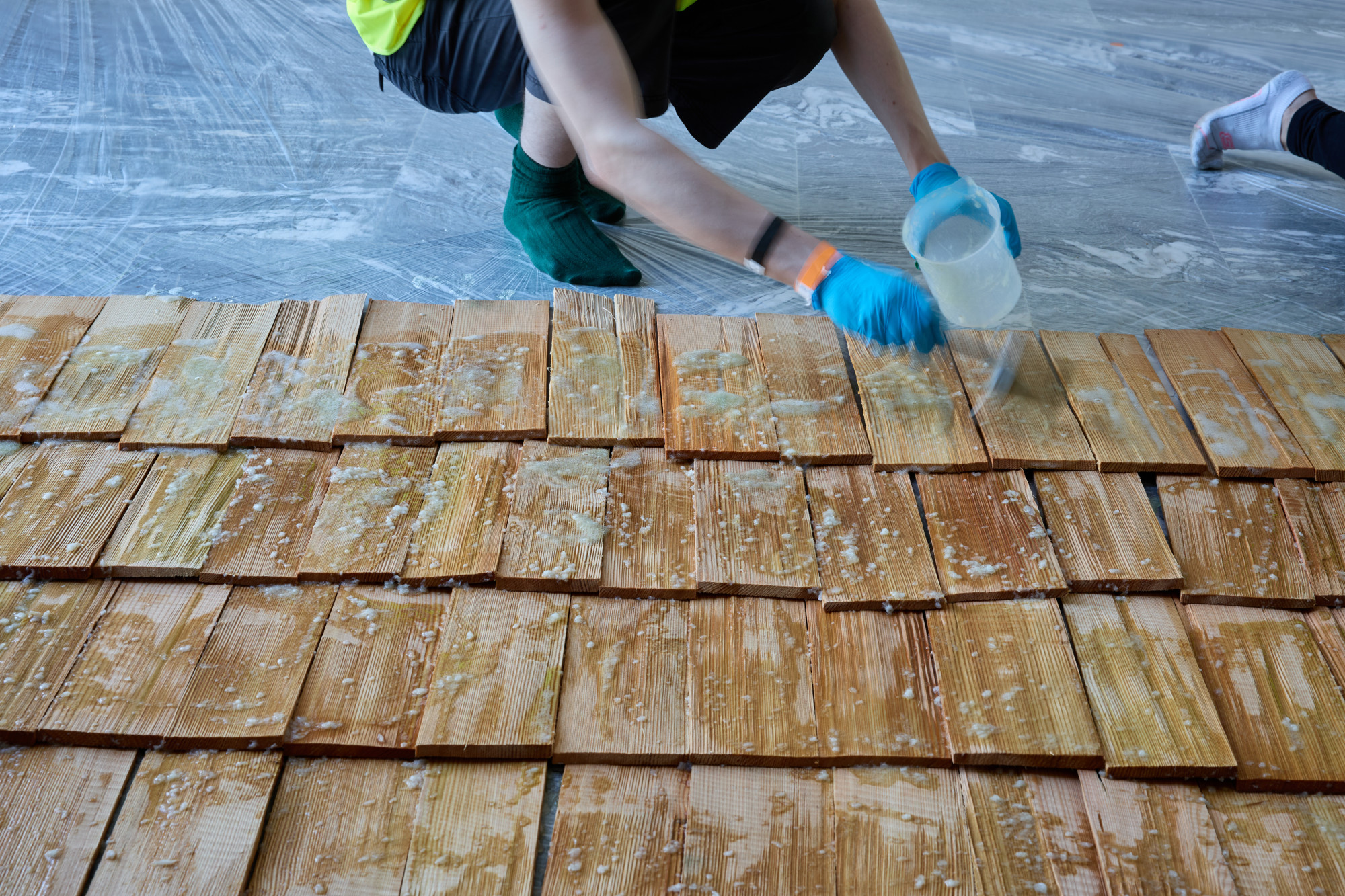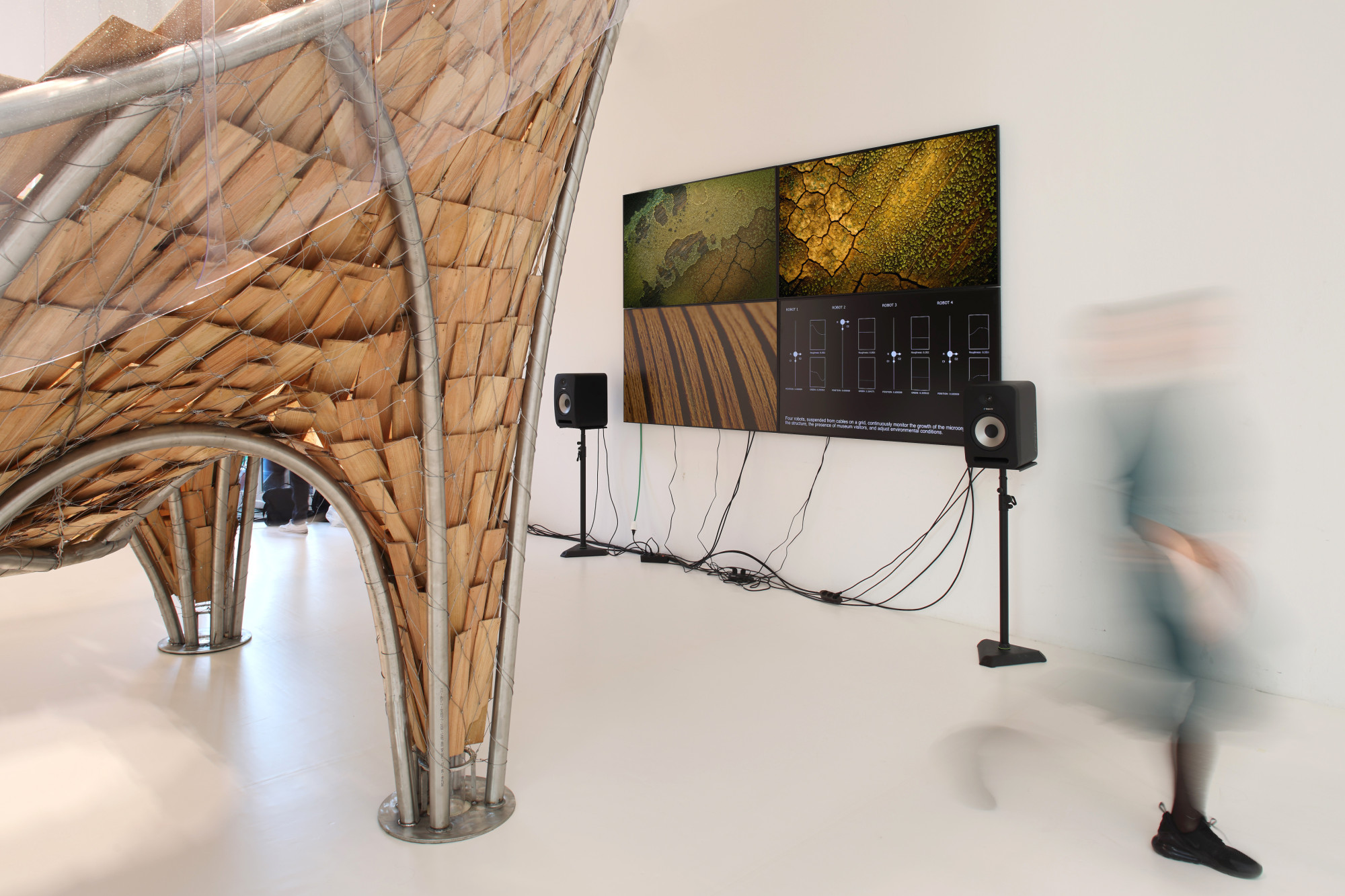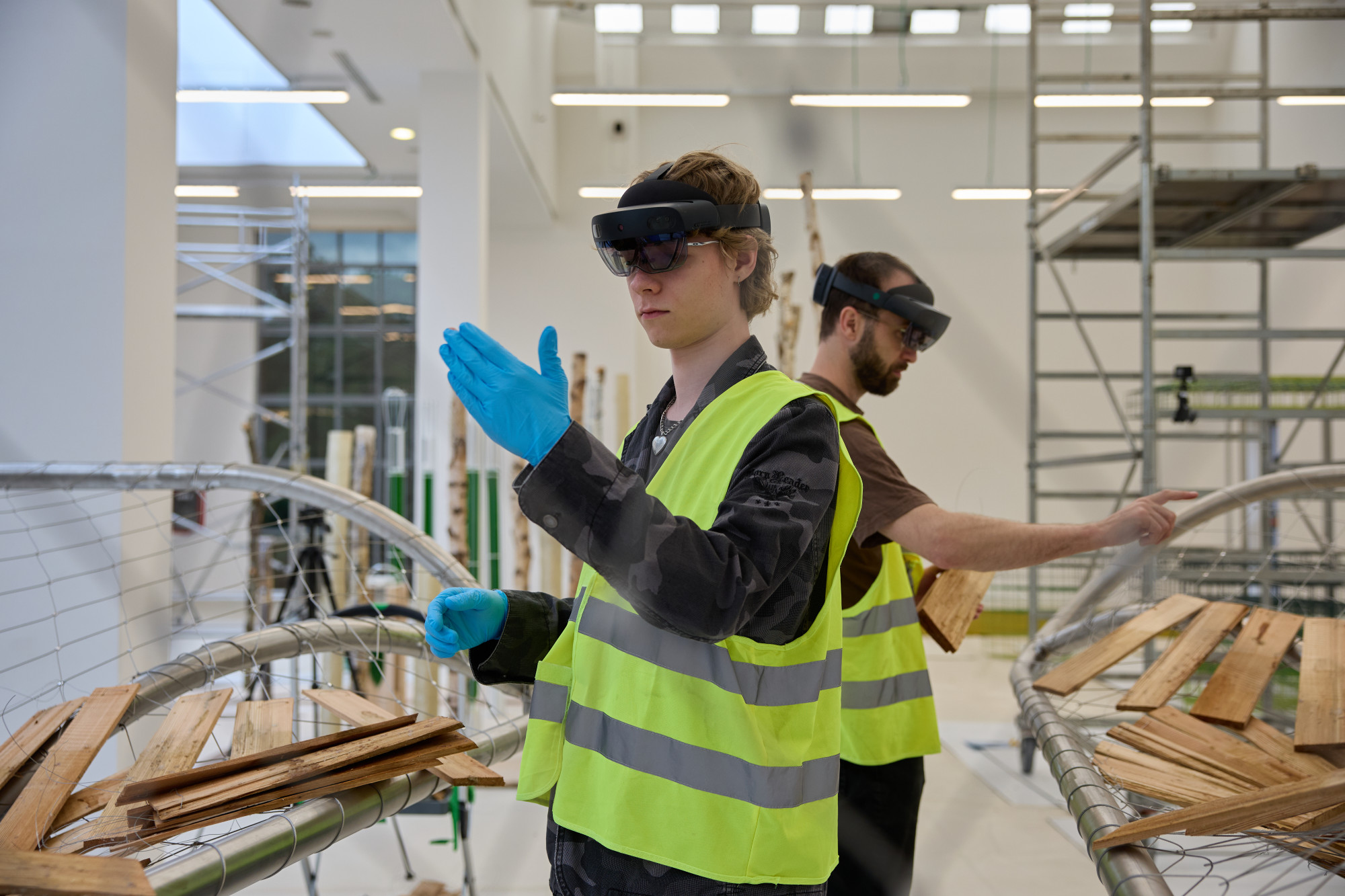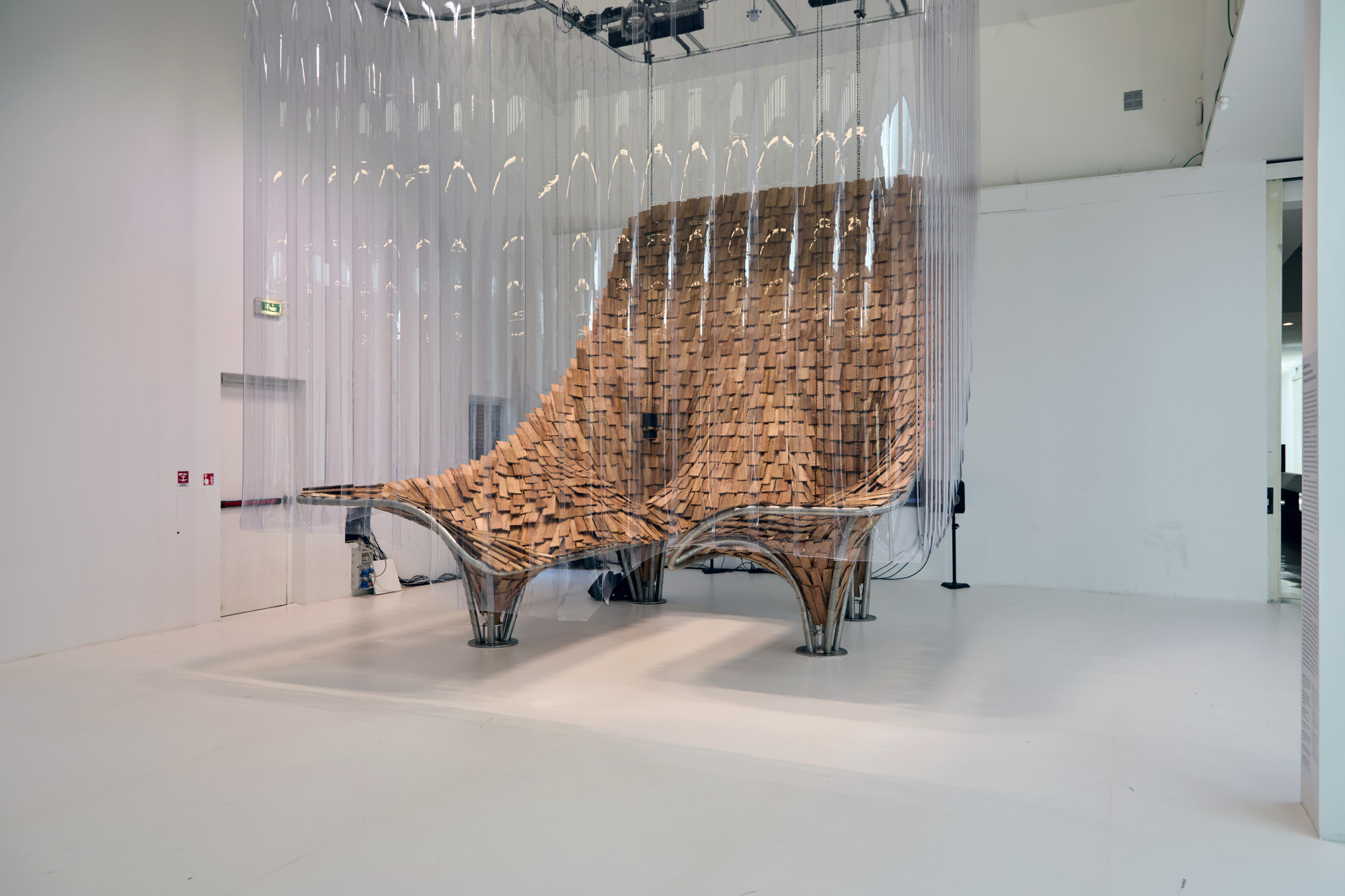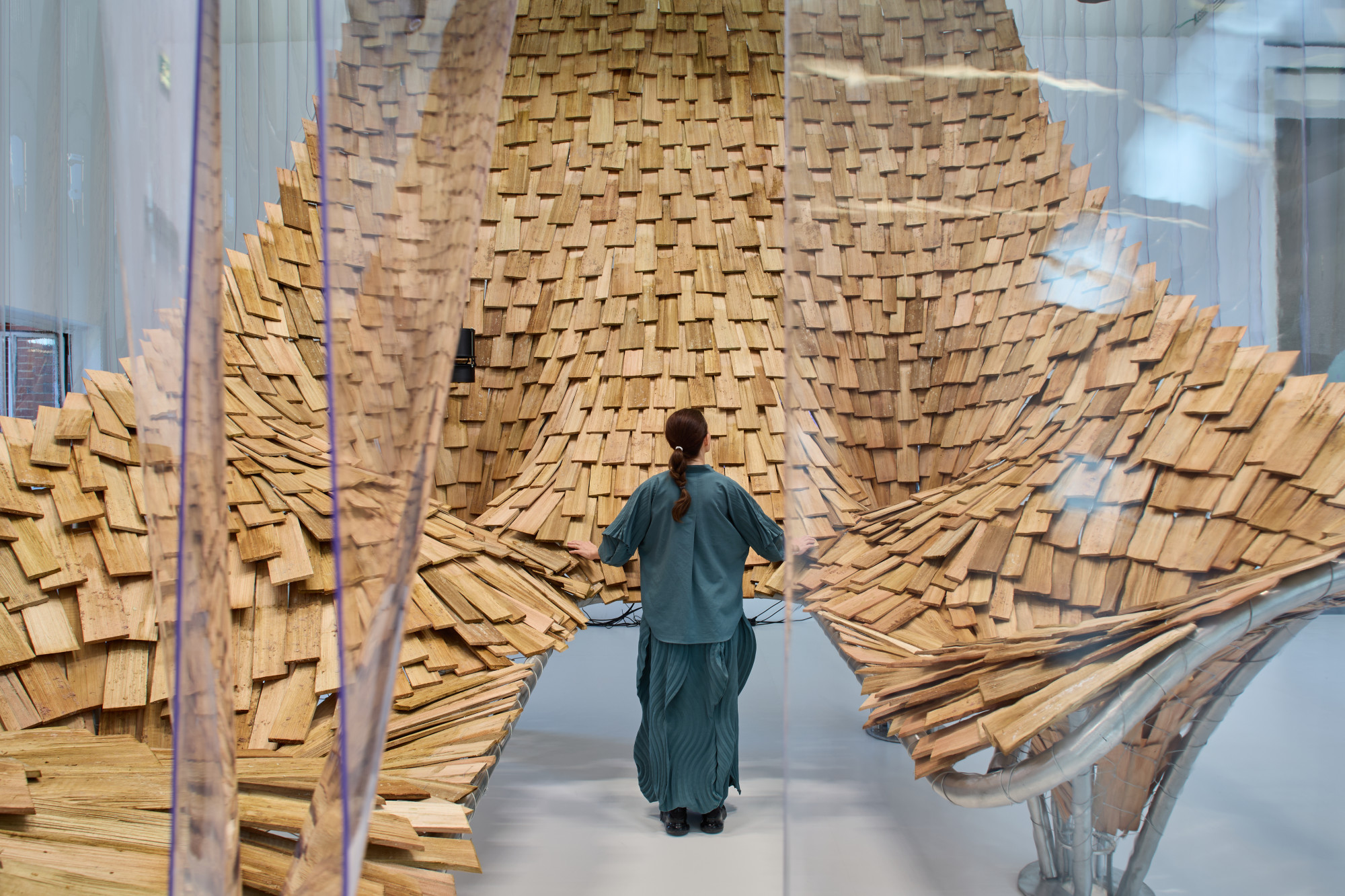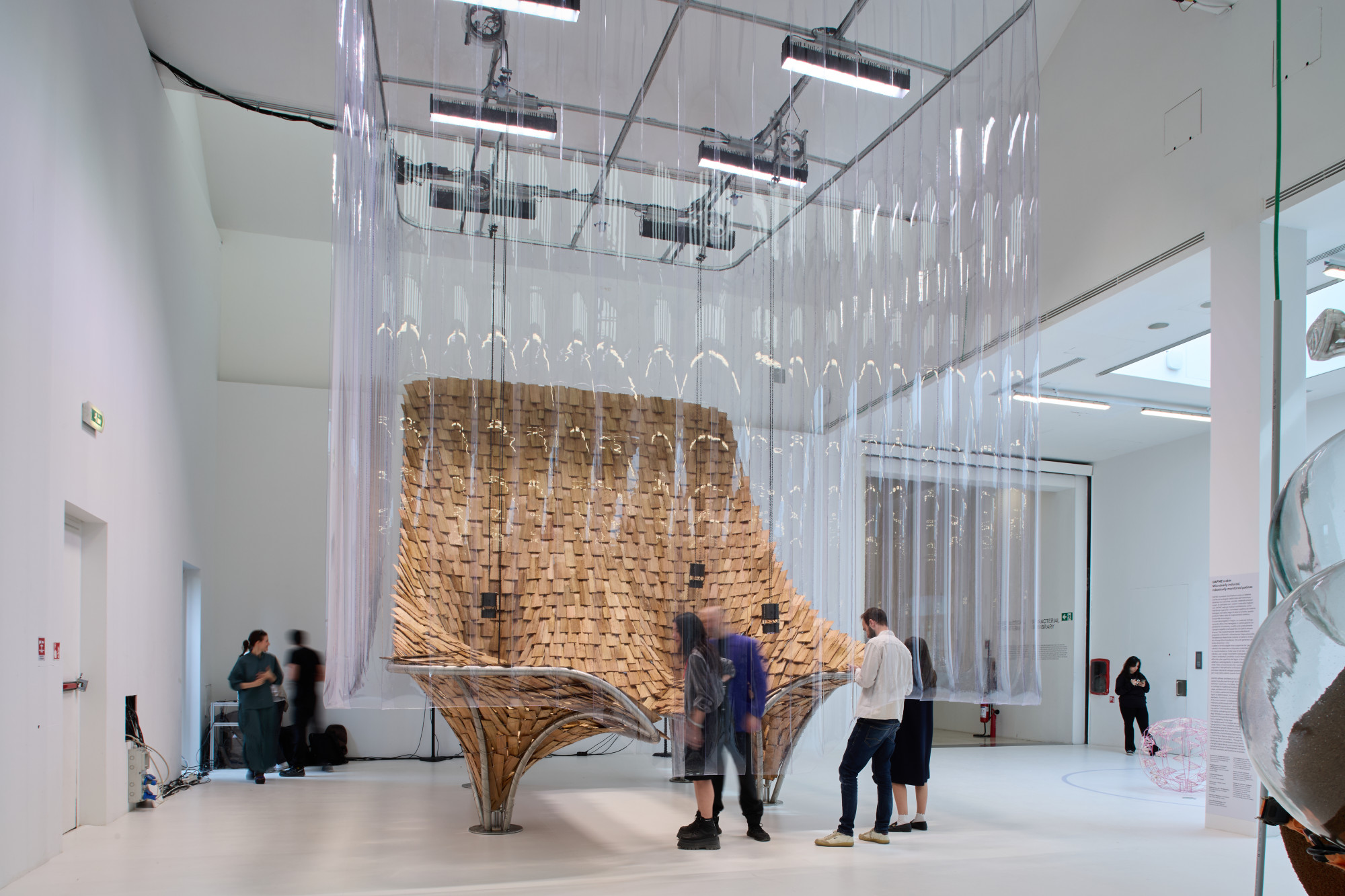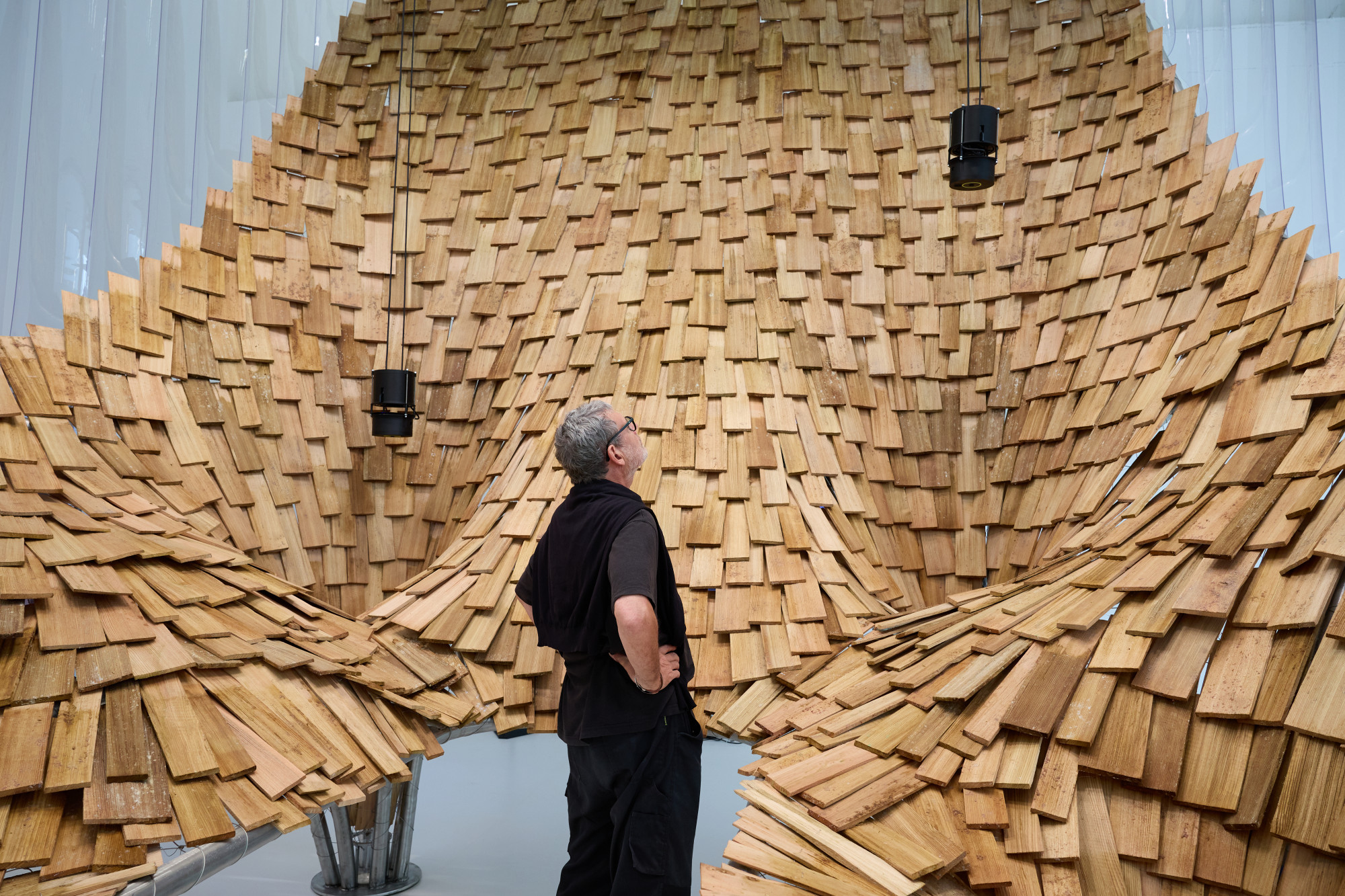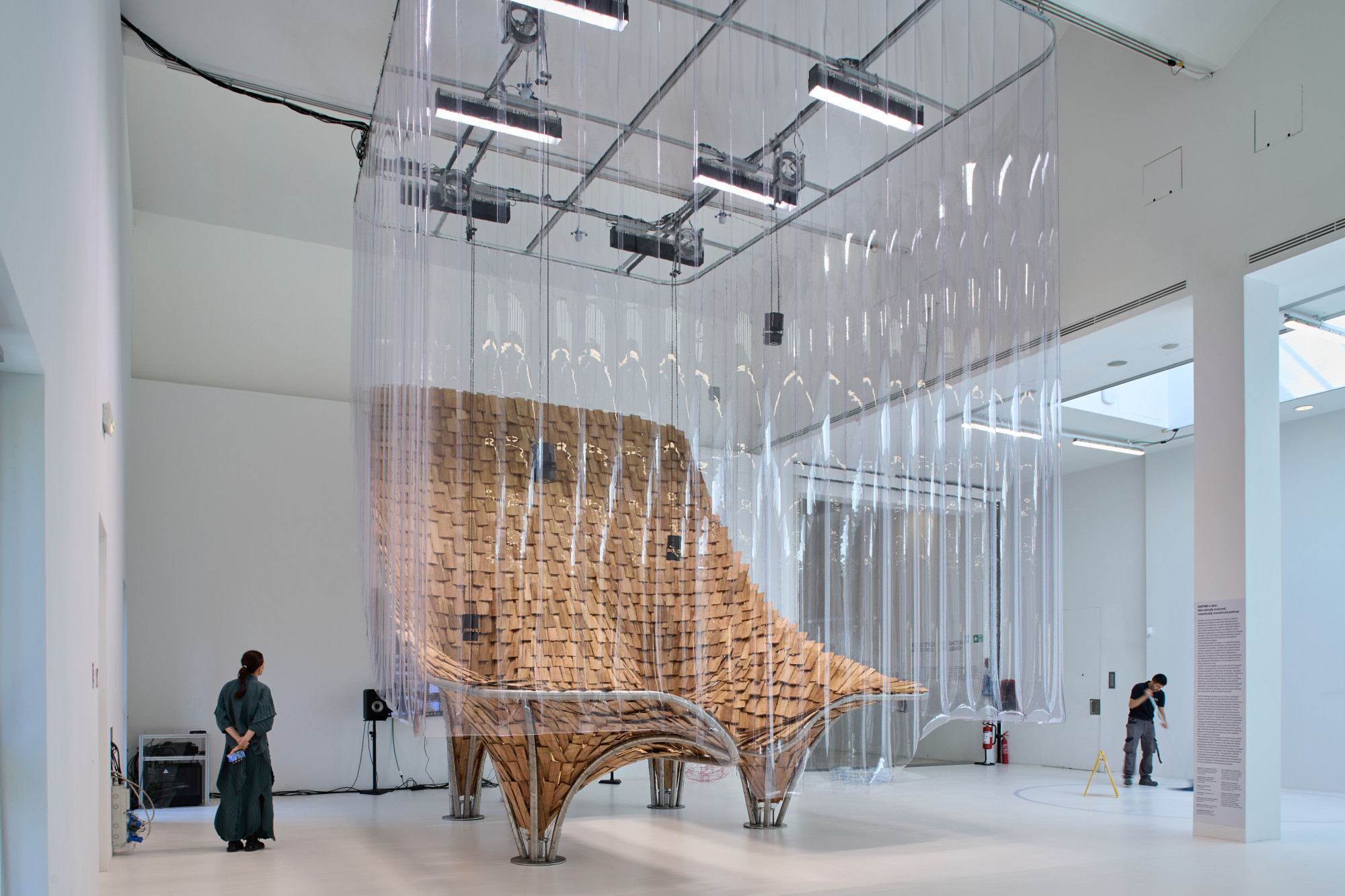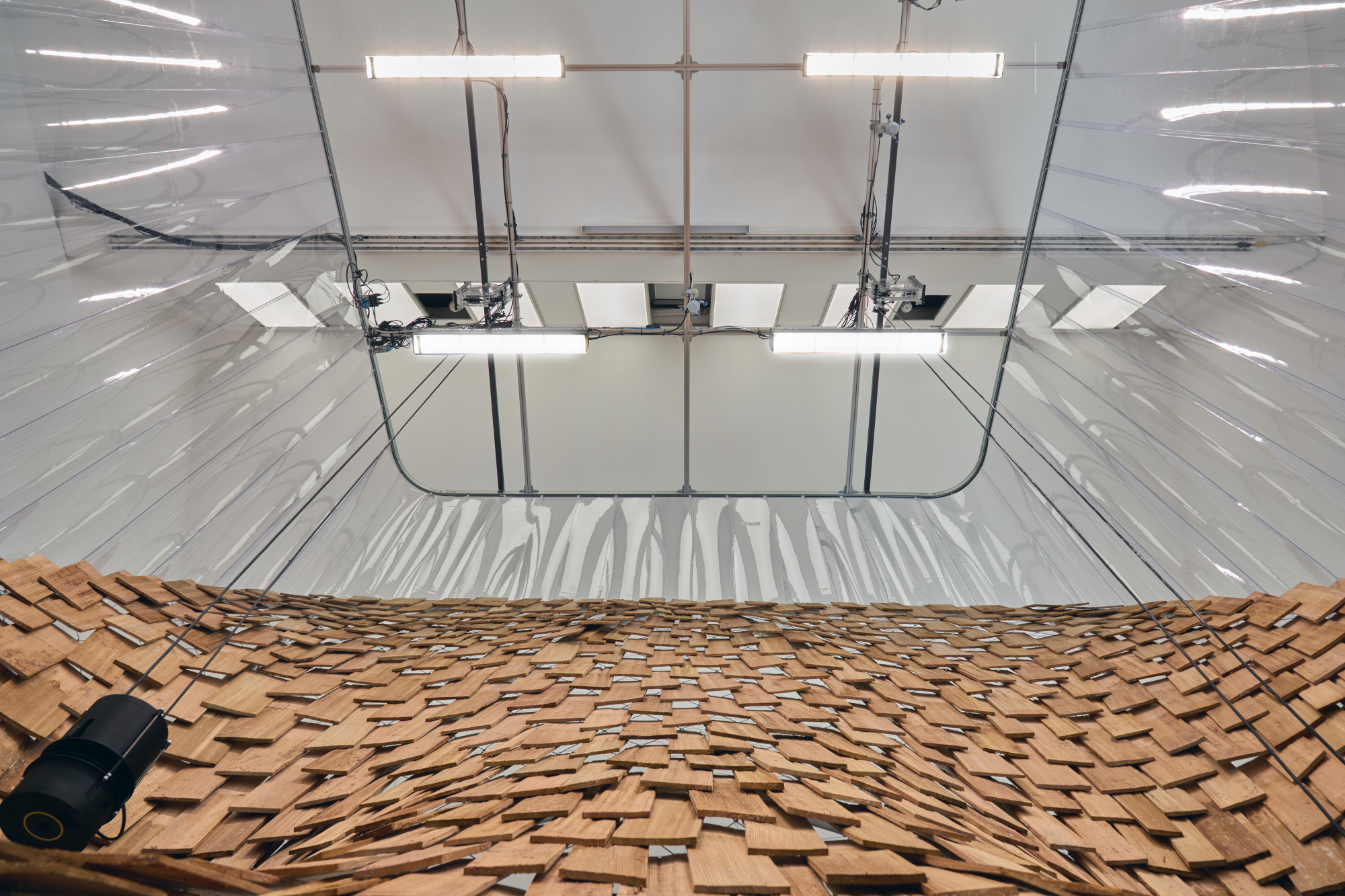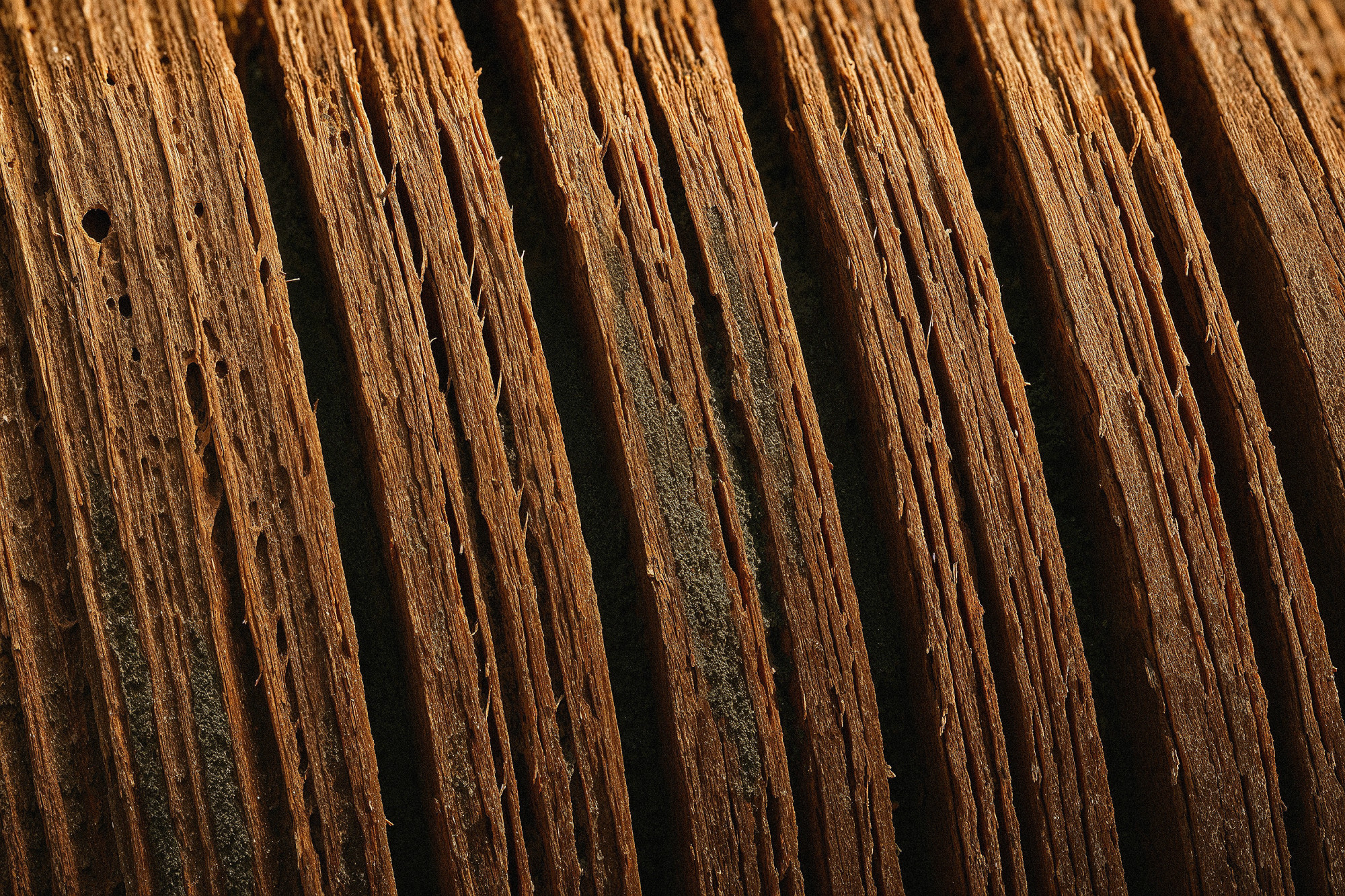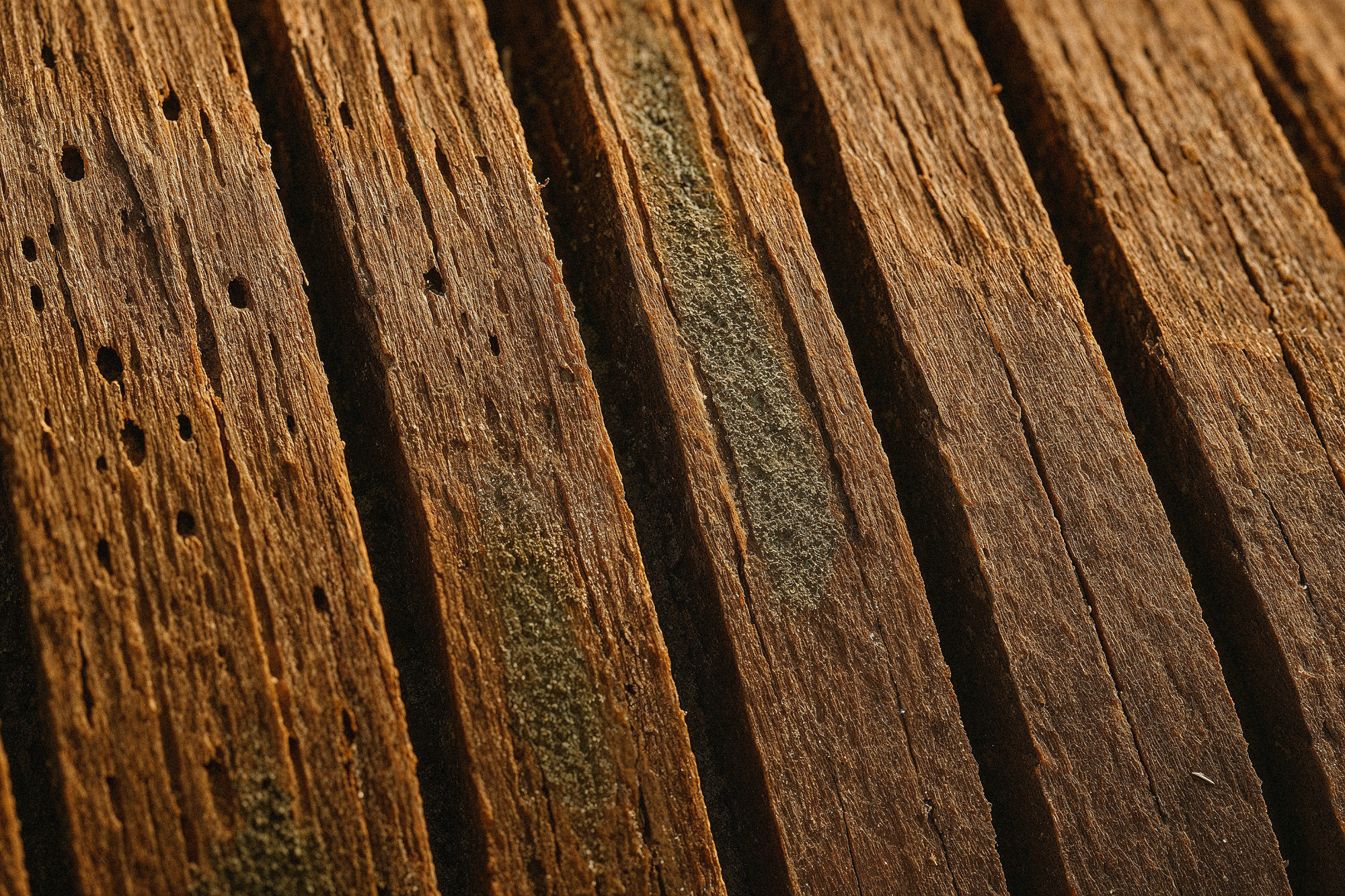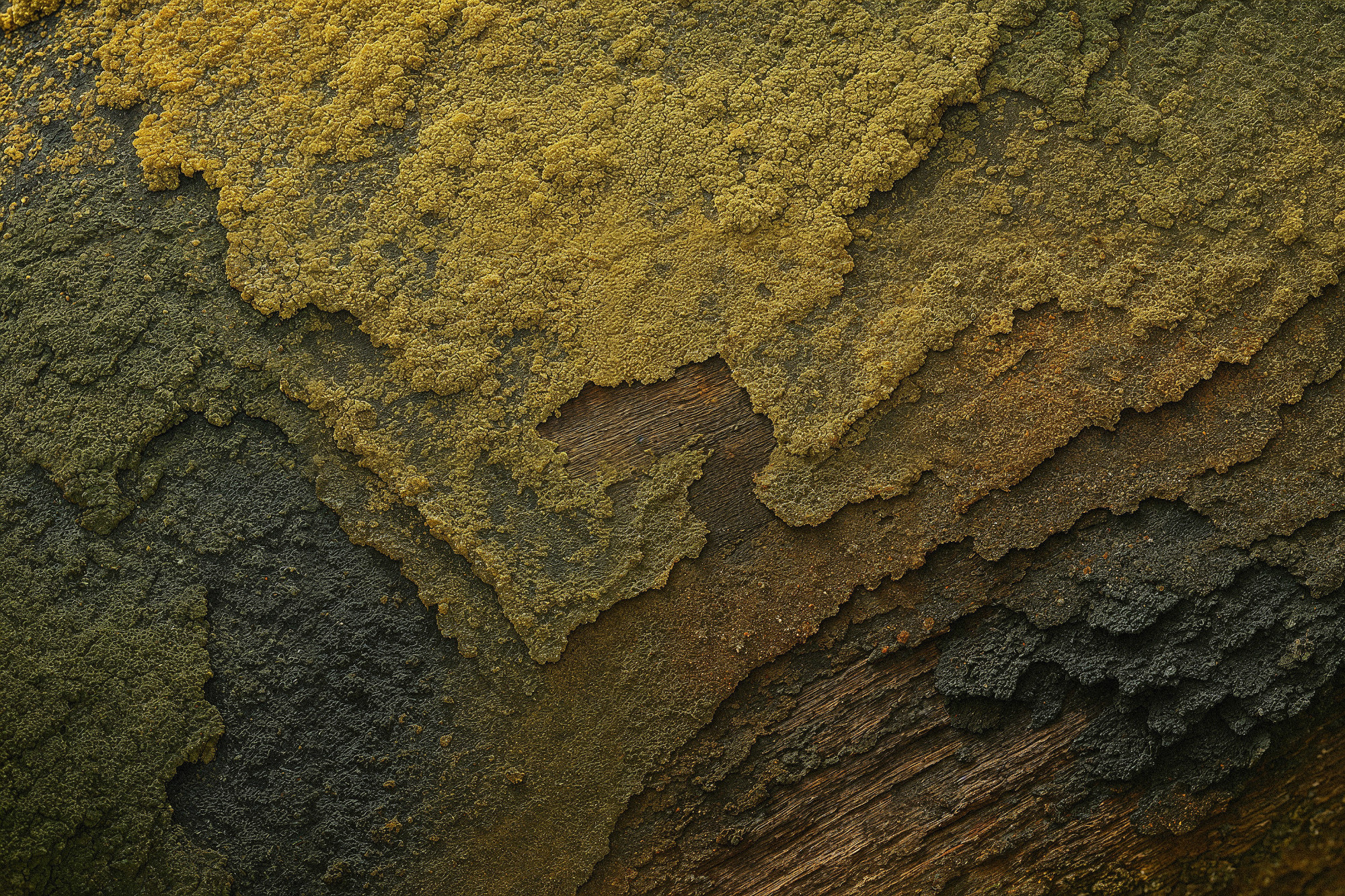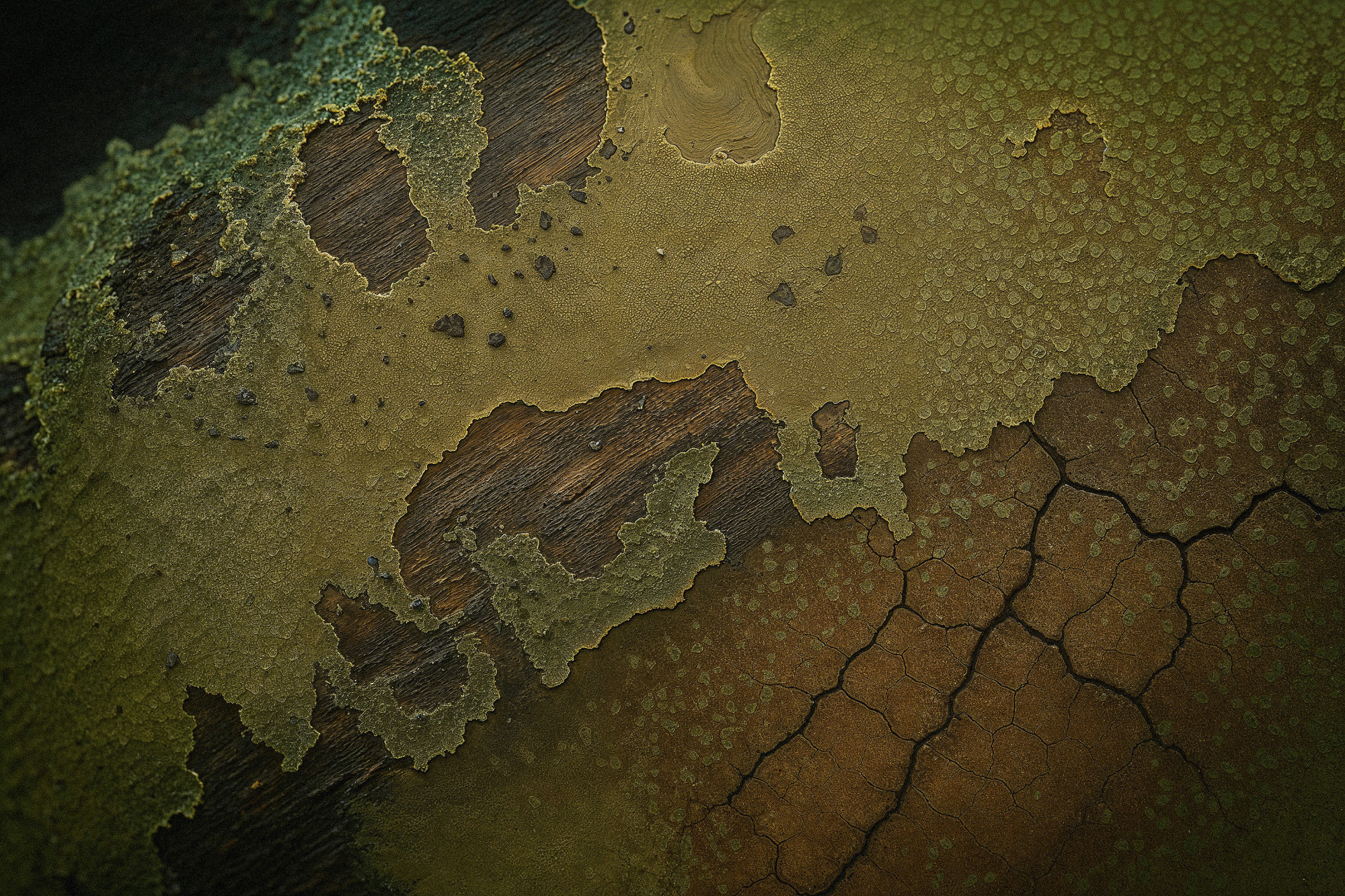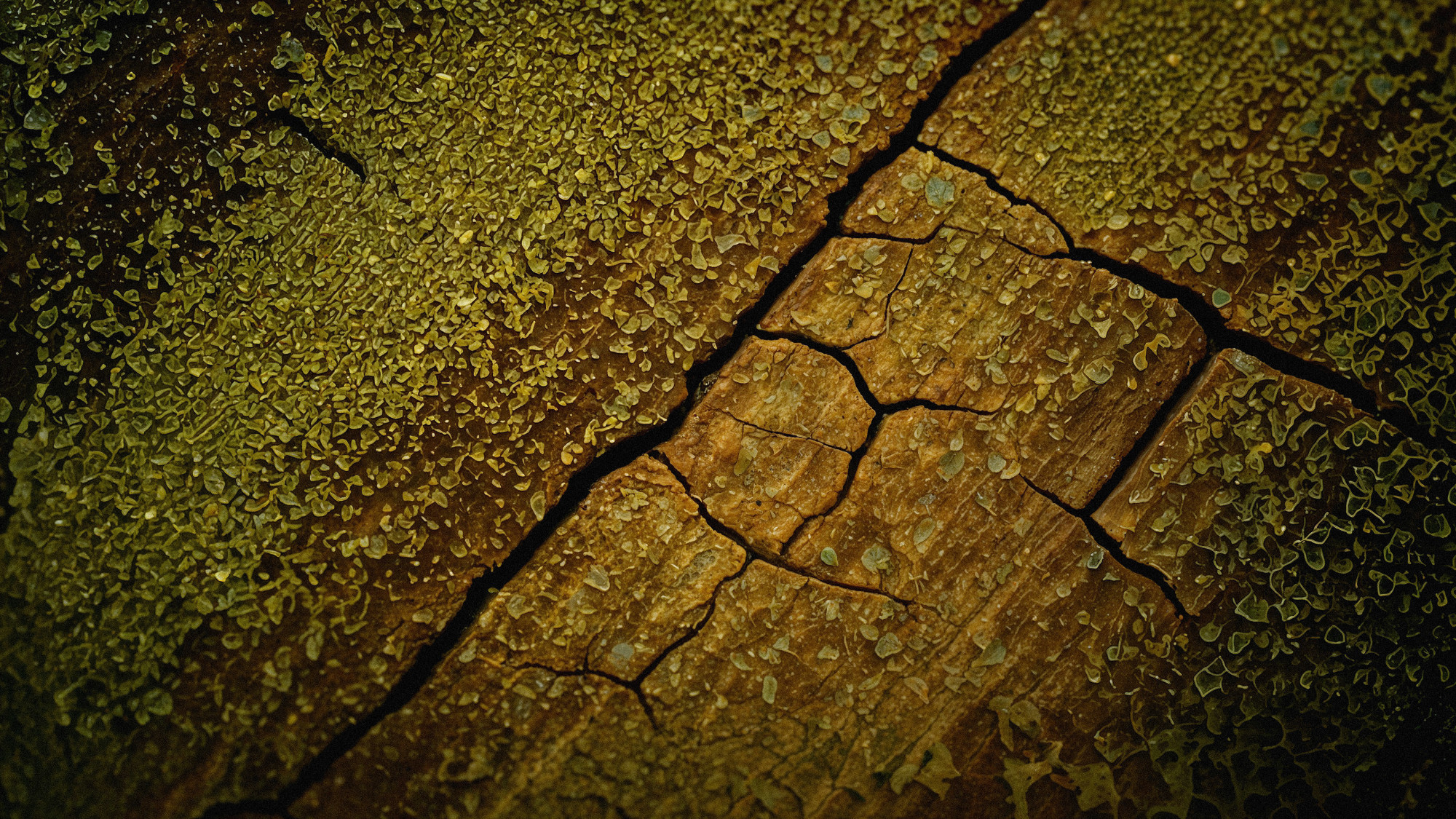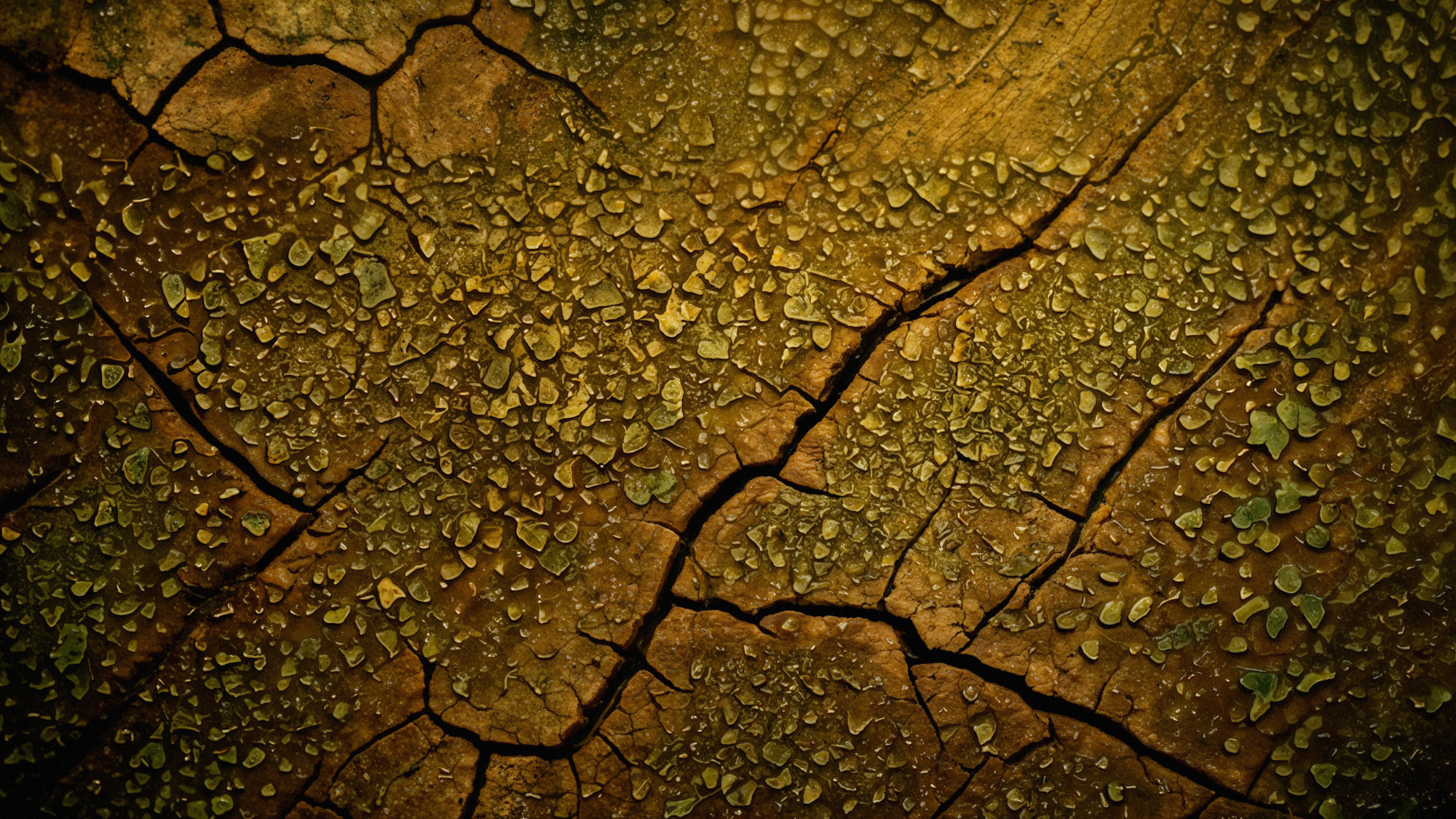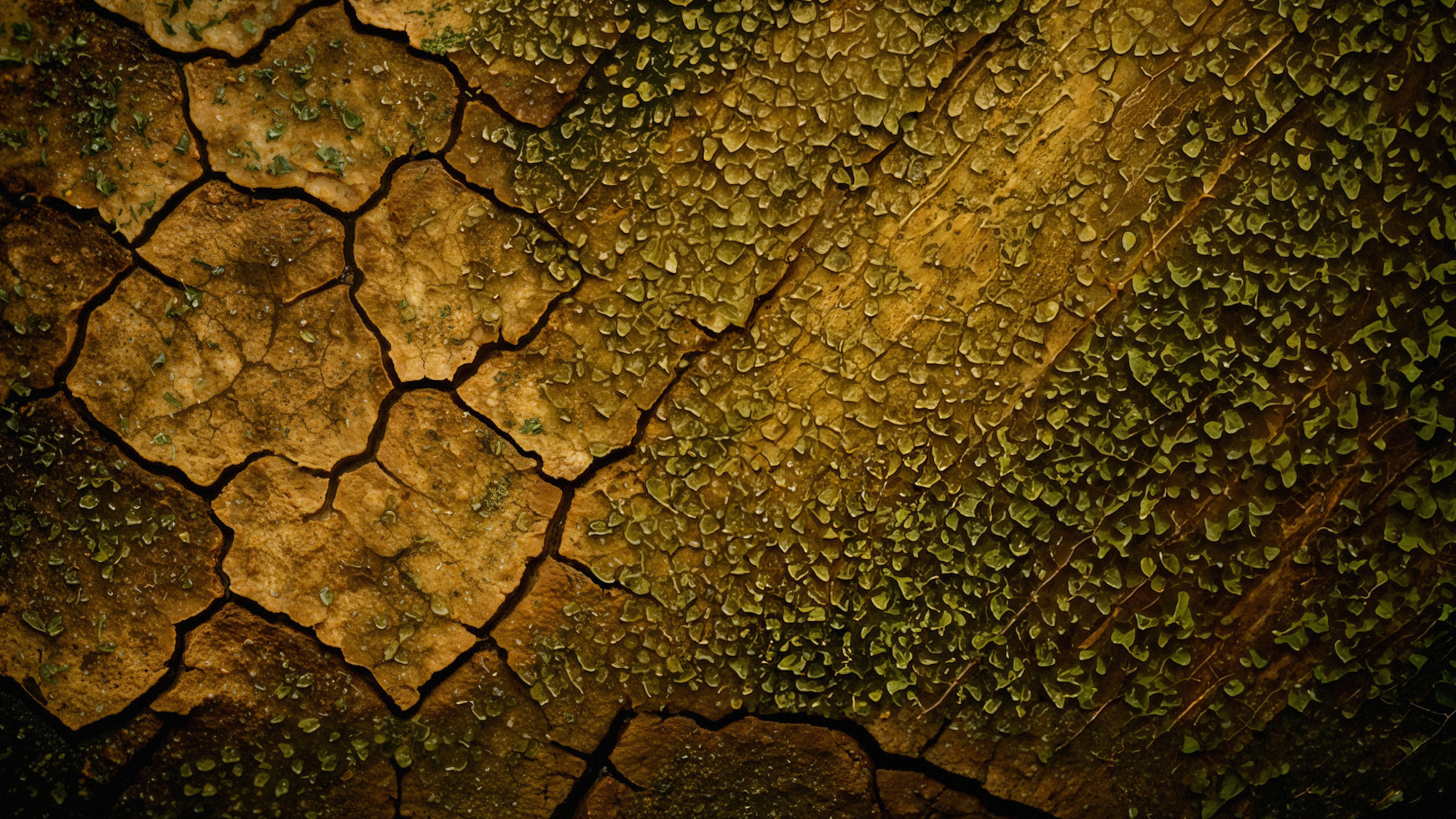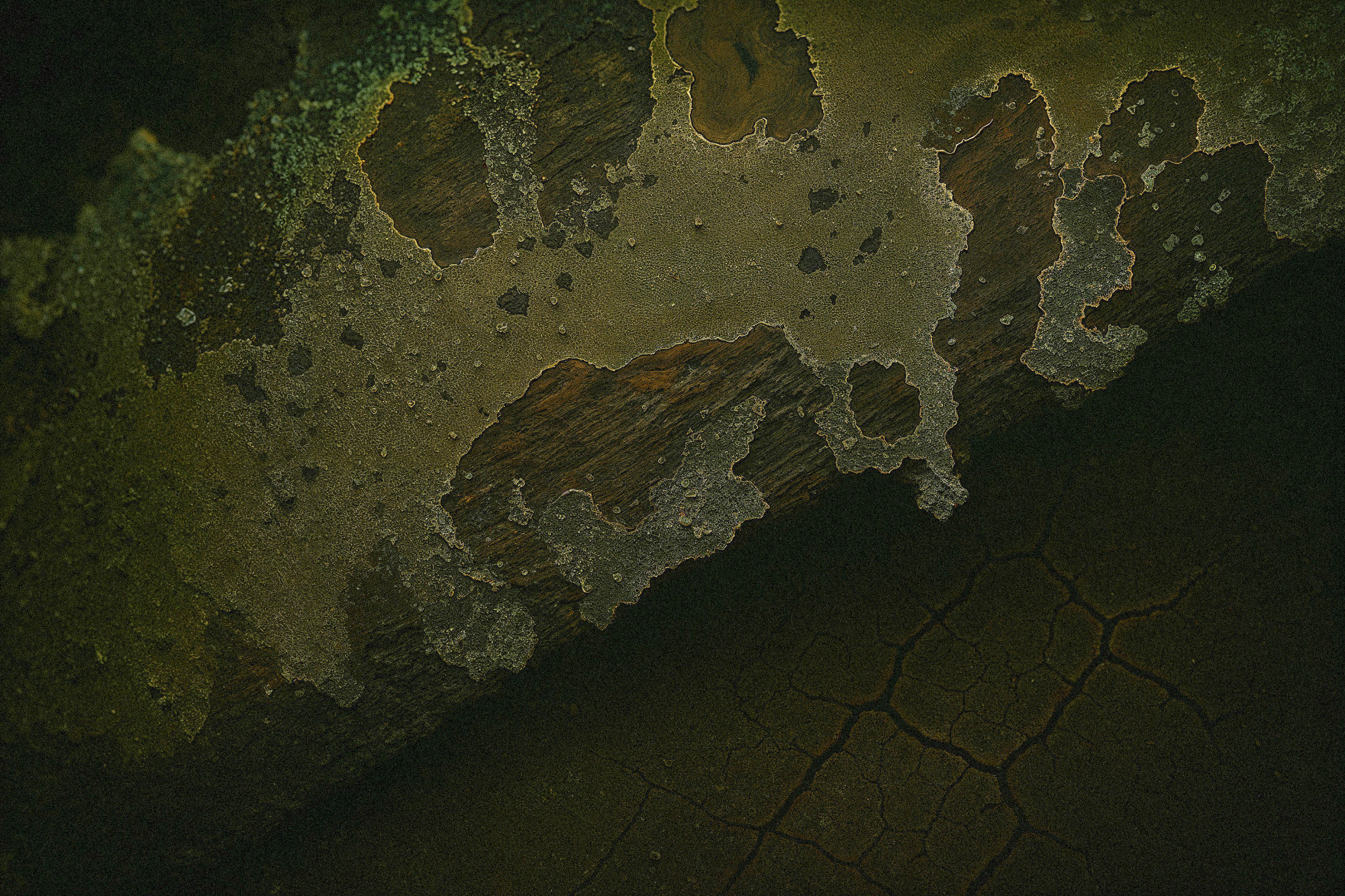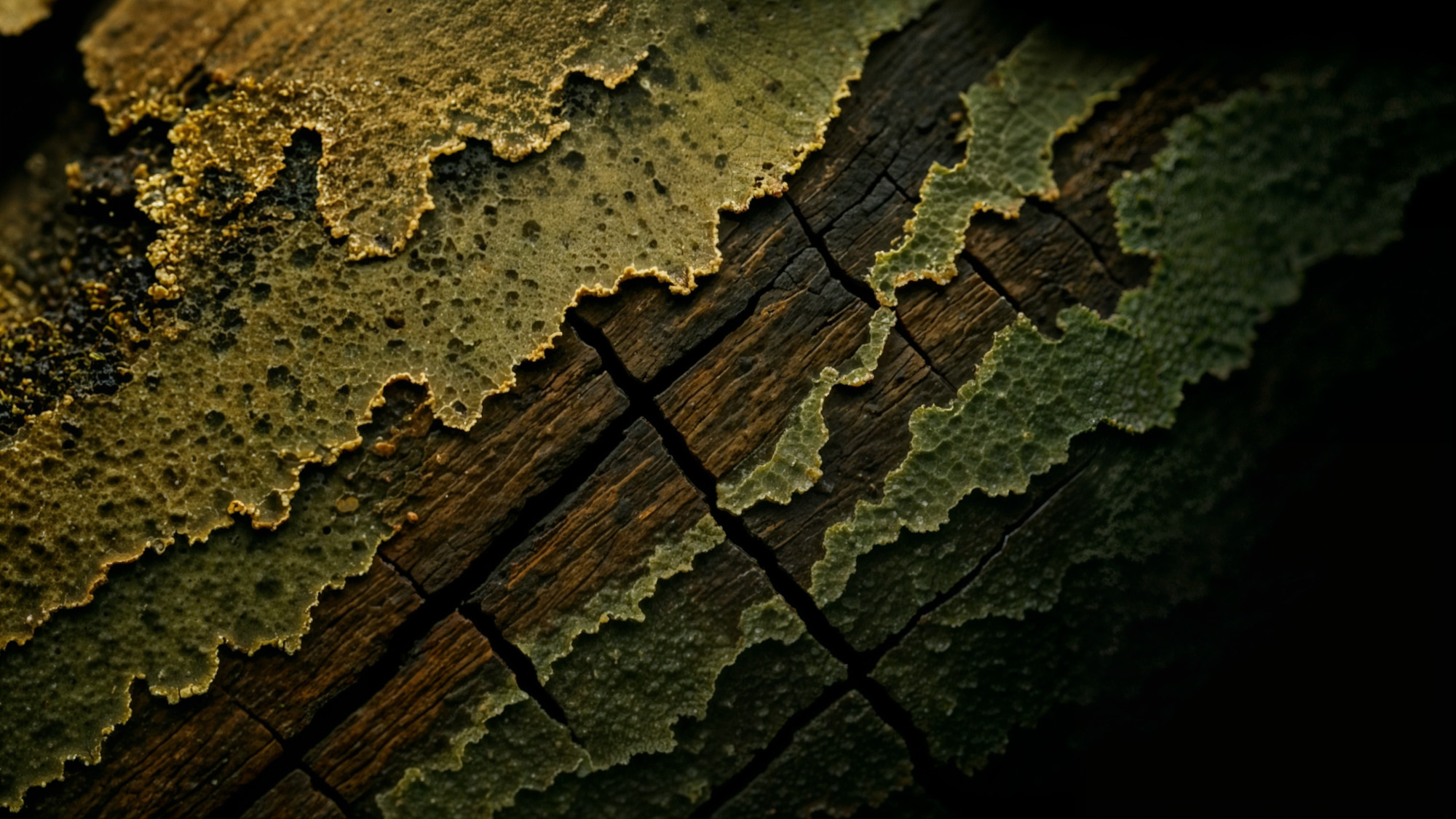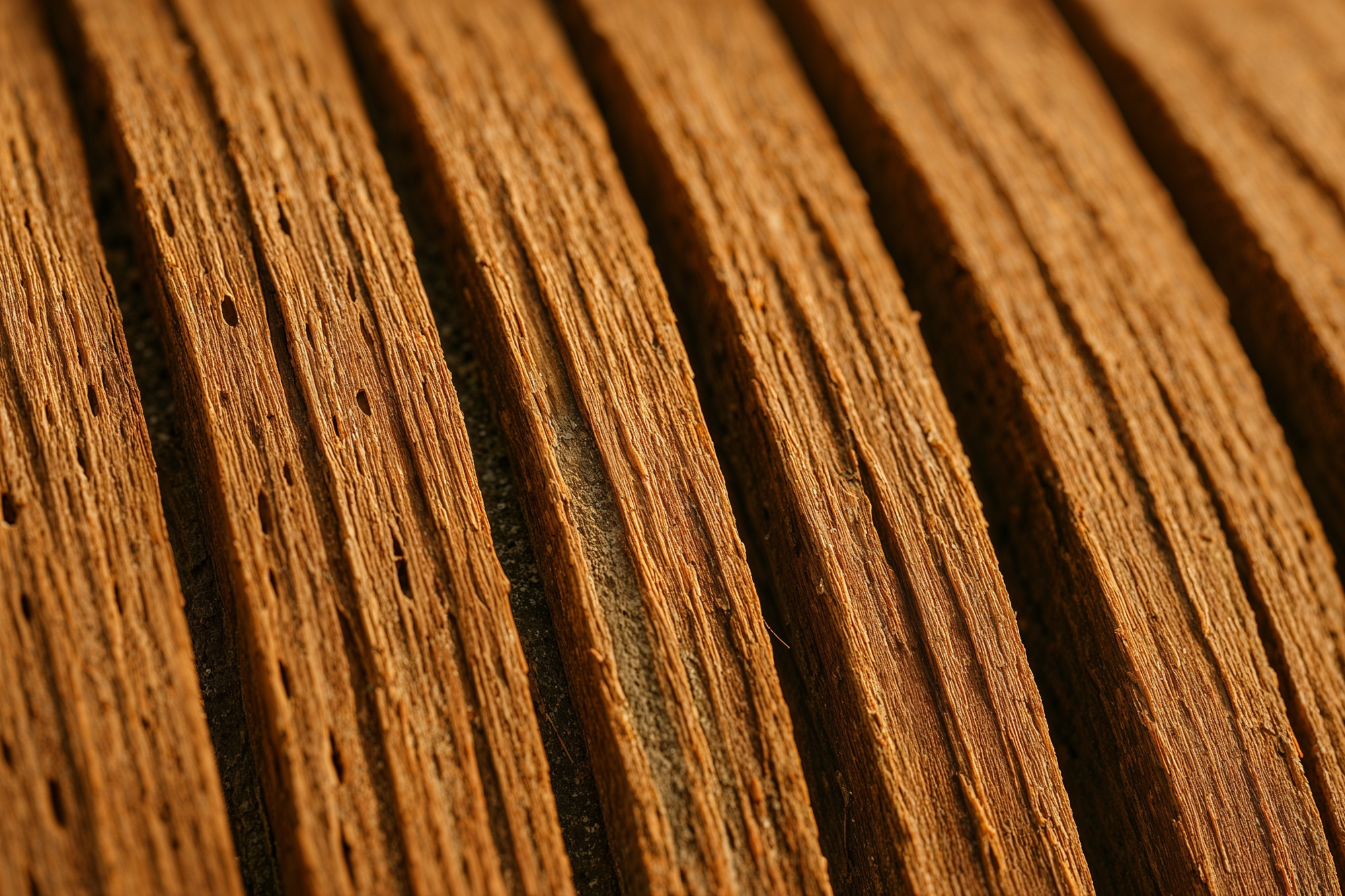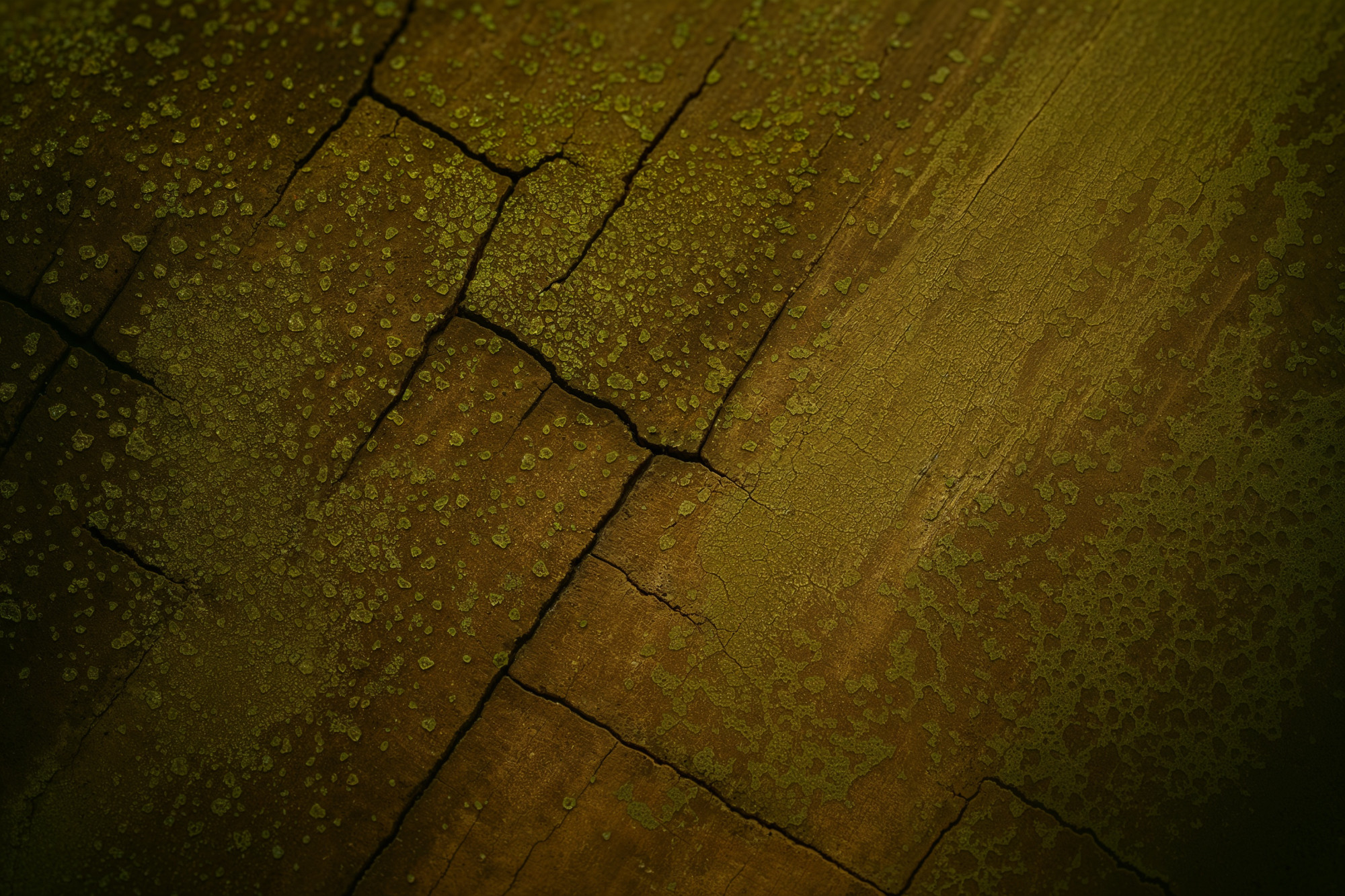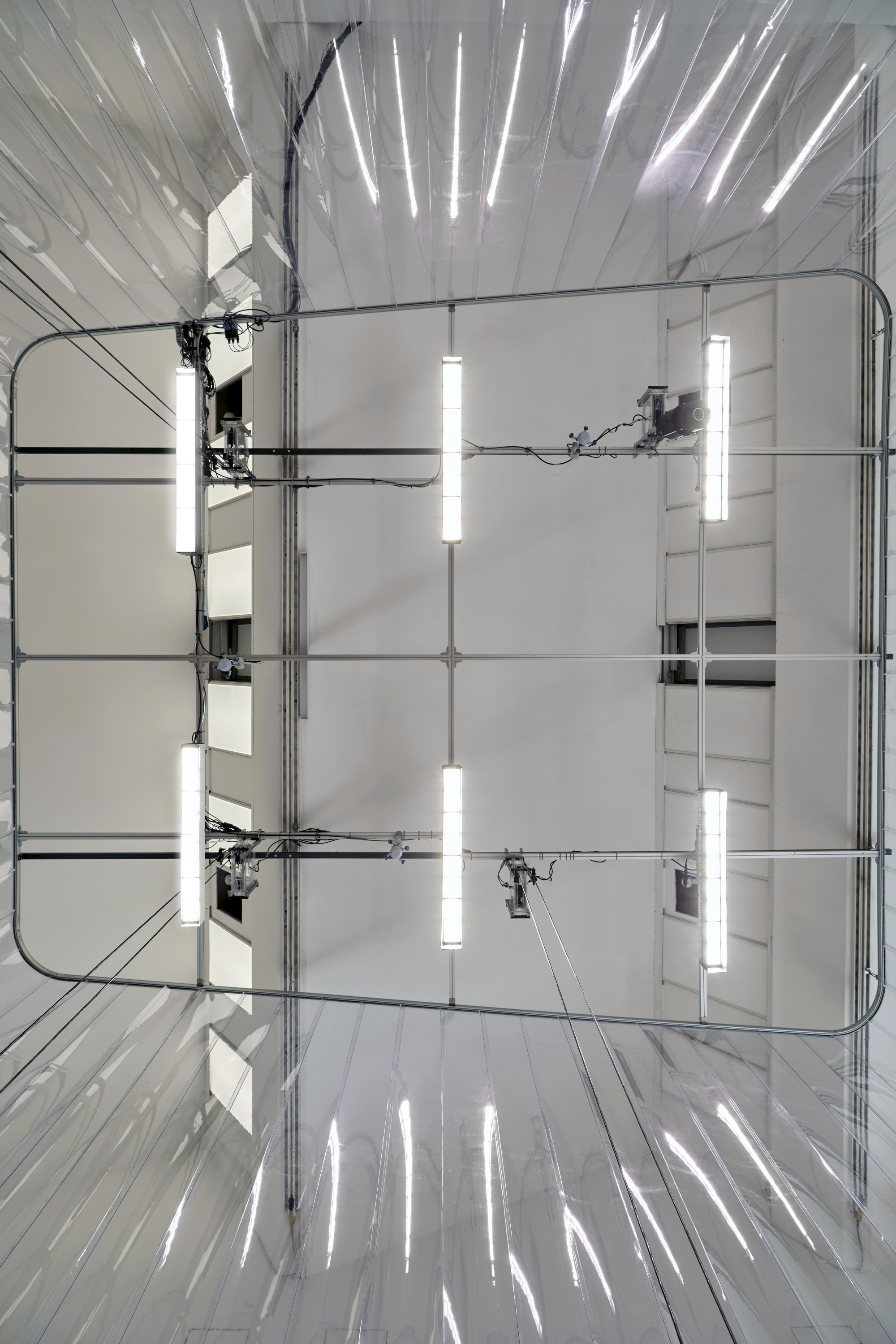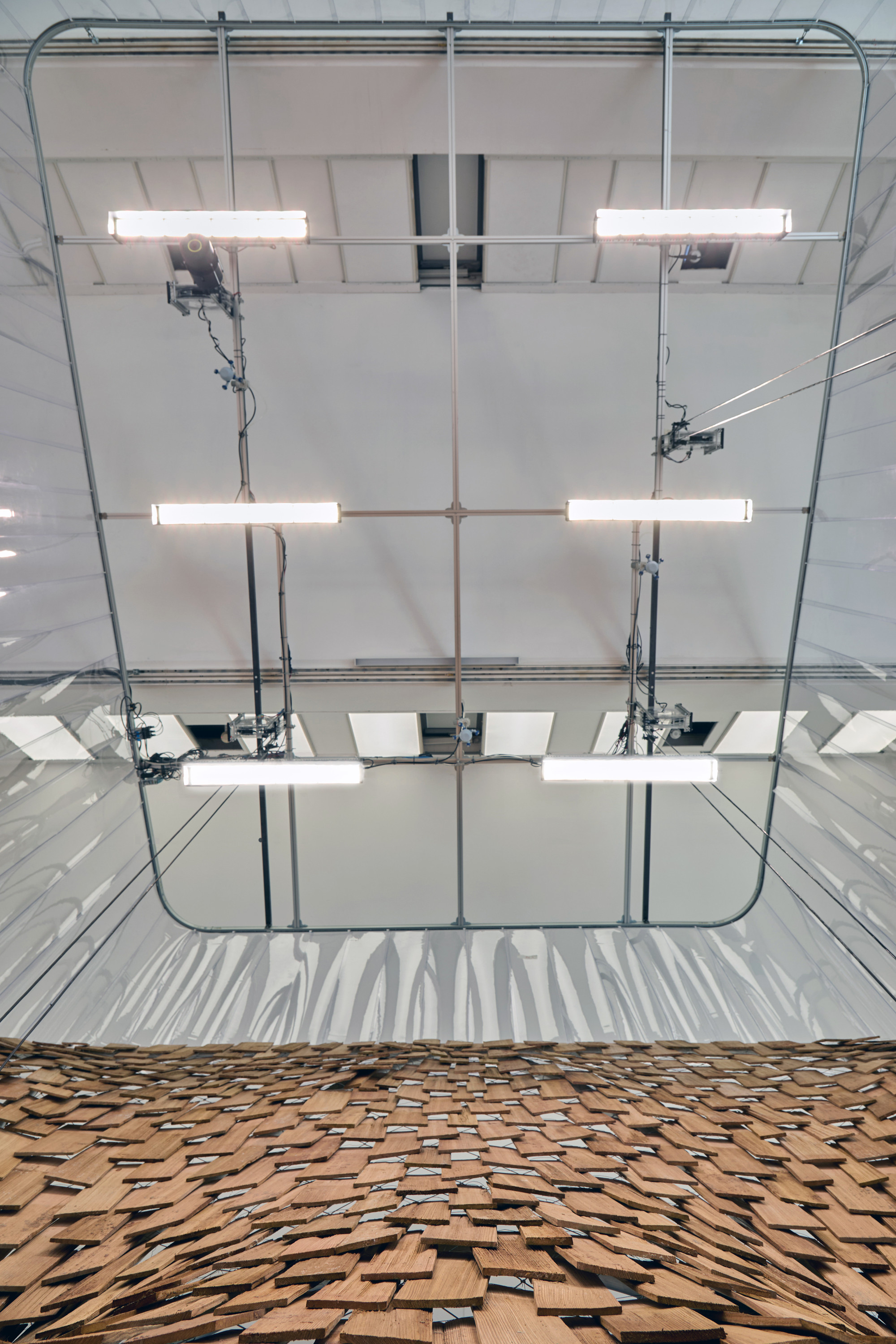What if architecture could sense, adapt and grow like a living organism? “Dafne’s skin” explores this question by reimagining the built environment as a responsive, biotechnological system. In this interface, microbial life, machine vision and environmental data converge to produce an evolving spatial experience.
Developed by architect and researcher Daniela Mitterberger and her transdisciplinary practice MAEID (Büro für Architektur und Multimediale Kunst), “Dafne’s skin” has debuted at the 2025 Triennale Milano. The project envisions architecture not as a static shelter but as a dynamic surface: a cultivated “dry garden” sustained by a network of robotic agents known as “geographers.” These small, mobile machines monitor microbial activity on the structure’s surface, using cameras and computer vision to detect shifts in color and texture. The data they collect triggers real-time responses—changes in humidity, light and nutrients—designed to sustain the living material and sculpt the garden’s behavior.
As visitors move through the installation, their presence influences these automated adjustments,. The more people engage with the work, the more the bacterial growth is encouraged, creating a feedback loop between human interaction and microbial growth. The result is a choreography of adaptation: an architectural “skin” that listens, responds and co-evolves with its environment.
At its core, “Dafne’s skin” is a self-regulating structure that redefines the relationship between architecture and living systems. The microbial patina covering its surface is not ornamental but vital—a responsive, living layer cultivated and sustained through ongoing communication with the geographers. These robotic agents act as caretakers and interpreters, transforming sensory input into behavioral output. The result is a living ecosystem in which architecture behaves more like a biological organism: sensing, adapting and evolving in response to its surroundings and the people within it.
This speculative ecology is the outcome of interdisciplinary collaboration. The project brings together a team that works across architecture, biology, sound and computation. Tiziano Derme and Daniela Mitterberger, lead the project and conceptualised and designed the artwork . Sound artist Luca Pagan and the collective LOREM shape the sonic and visual environment using machine learning and emotional datasets. . Martin Gasser contributes expertise in AI and computer vision, developing the systems that allow the robotic geographers to sense and respond to the installation’s changing surface. Dr. Dalia Dranseike, a specialist in living materials, designed and cultivated the starter batch of the microbial paint. “Dafne’s skin” also draws on Daniela’s academic research at Princeton University’s School of Architecture, where she leads the Extended Augmentation in Architecture Lab (XAIA Lab). To facilitate the assembly of the structure comprising over 2000 irregular handsplit wooden shingles, an extended reality application was used. This ad hoc developed application enables to first digitize then precisely position the shingles.
At once scientific experiment, spatial prototype and environmental performance, “Dafne’s skin” challenges conventional notions of architecture as inert infrastructure. Instead, it proposes a model for future buildings designed as active, symbiotic participants in a larger ecological system—an architecture that breathes, senses and grows. In this vision, the skin of a building is not a boundary but a sensing, expressive layer: alive to its context, inhabitants and internal ecosystems.
CreativeX is a proud supporter of “Dafne’s skin” with additional support from Milan Triennale, Princeton University - School of Architecture, ETH Zurich - Institute of Technology in Architecture and the Austrian Cultural Forum Milan
[insert additional funding sources]. Special thanks to Carl Stahl ARC GmbH, Embodied AI, SANlight GmbH, Gasser Schindeln, Spraying Systems Co., APR Instruments and to the collaborators Michał Miśków, Clemens Conditt, Leonie Felger (MAEID) and Eleni Alexi (XAIA Lab)
